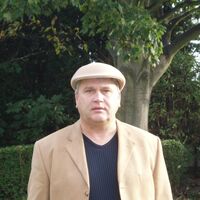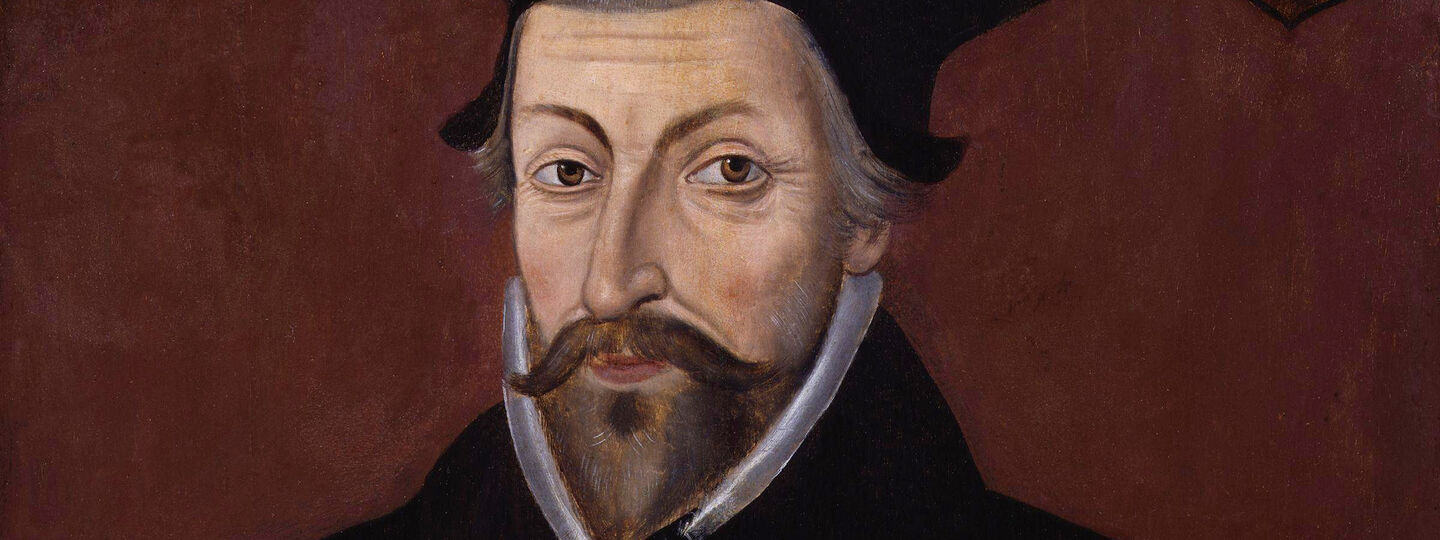
Info
Nicholas Ridley
Unknown author
late 16th century
National Portrait Gallery
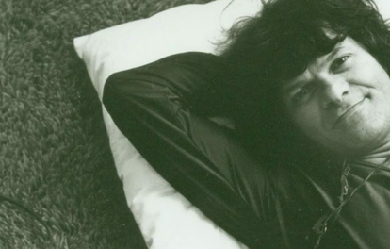
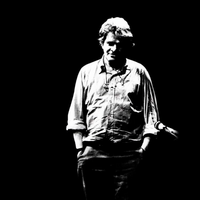
Gregory Nunzio Corso (March 26, 1930– January 17, 2001) was an American poet, youngest of the inner circle of Beat Generation writers (with Jack Kerouac, Allen Ginsberg, and William S. Burroughs). Early life Born Nunzio Corso at St. Vincent’s hospital (later called the Poets’ hospital after Dylan Thomas died there), Corso later selected the name “Gregory” as a confirmation name. Within Little Italy and its community he was “Nunzio,” while he dealt with others as “Gregory.” He often would use “Nunzio” as short for “Annunziato,” the announcing angel Gabriel, hence a poet. Corso identified with not only Gabriel but also the Greco-Roman God Hermes, the divine messenger. Corso’s mother, Michelina Corso (born Colonna) was born in Miglianico, Abruzzo, Italy, and immigrated to the United States at the age of nine, with her mother and four other sisters. At 16, she married Sam Corso, a first-generation Italian American, also teenage, and gave birth to Nunzio Corso the same year. They lived at the corner of Bleecker and MacDougal, the heart of Greenwich Village and upper Little Italy. Childhood Sometime in his first year, Corso’s mother mysteriously abandoned him, leaving him at the New York Foundling Home, a branch of the Catholic Church Charities. Corso’s father, Sam “Fortunato” Corso, a gruff garment center worker, found the infant and promptly put him in a foster home. Michelina came to New York but her life was threatened by Sam. One of Michelina’s sisters was married to a New Jersey mobster who offered to give Michelina her “vengeance,” that is to kill Sam. Michelina declined and returned to Trenton without her child. Sam consistently told Corso that his mother had returned to Italy and deserted the family. He was also told that she was a prostitute and was “disgraziata” (disgraced) and forced into Italian exile. Sam told the young boy several times, “I should have flushed you down the toilet.” It was 67 years before Corso learned the truth of his mother’s disappearance. Corso spent the next 11 years in foster care in at least five different homes. His father rarely visited him. When he did, Corso was often abused: “I’d spill jello and the foster home people would beat me. Then my father would visit and he’d beat me again—a double whammy.” As a foster child, Corso was among thousands that the Church aided during the Depression, with the intention of reconstituting families as the economy picked up. Corso went to Catholic parochial schools, was an altar boy and a gifted student. His father, in order to avoid the military draft, brought Gregory home in 1941. Nevertheless, Sam Corso was drafted and shipped overseas. Corso, then alone, became a homeless child on the streets of Little Italy. For warmth he slept in subways in the winter, and then slept on rooftops during the summer. He continued to attend Catholic school, not telling authorities he was living on the streets. With “permission,” he stole breakfast bread from Vesuvio Bakery, 160 Prince Street in Little Italy. Street food stall merchants would give him food in exchange for running errands. Adolescence At age 13, Corso was asked to deliver a toaster to a neighbor. While he was running the errand, a passerby offered money for the toaster, and Corso sold it. He used the money to buy a tie and white shirt, and dressed up to see the film The Song of Bernadette, about the mystical appearance of the Virgin Mary to Bernadette Soubirous at Lourdes. On returning from the movie, the police apprehended him. Corso claimed he was seeking a miracle, namely, to find his mother. Corso had a lifelong affection for saints and holy men: “They were my only heroes.” Nonetheless, he was arrested for petty larceny and incarcerated in The Tombs, New York’s infamous jail. Corso, even though only thirteen years old, was celled next to an adult, criminally insane murderer who had stabbed his wife repeatedly with a screwdriver. The exposure left Corso traumatized. Neither Corso’s stepmother nor his paternal grandmother would post his $50 bond. With his own mother missing and unable to make bail, he remained in the Tombs. Later, in 1944 during a New York blizzard, a 14-year-old freezing Corso broke into his tutor’s office for warmth, and fell asleep on a desk. He slept through the blizzard and was arrested for breaking and entering and booked into the Tombs a second time, with adults. Terrified of other inmates, he was sent to the psychiatric ward of Bellevue Hospital Center and later released. At the age of seventeen, on the eve of his eighteenth birthday, Corso broke into a tailor shop and stole an over-sized suit to dress for a date. Police records indicate he was arrested two blocks from the shop. He spent the night in the Tombs and was arraigned the next morning as an 18-year-old with prior offenses. No longer a “youthful offender,” he was given a two to three years sentence to Clinton State Prison, in Dannemora, New York, on the Canadian border. It was New York’s toughest prison, the site of the state’s electric chair. Corso always has expressed a curious gratitude for Clinton making him a poet. His second book of poems, Gasoline, is dedicated to “the angels of Clinton Prison who, in my seventeenth year, handed me, from all the cells surrounding me, books of illumination.” Interestingly, Clinton later became known as the “poets’ prison,” as rap poets served time there. Corso at Clinton Correctional While being transported to Clinton, Corso, terrified of prison and the prospect of rape, concocted a story of why he was sent there. He told hardened Clinton inmates he and two friends had devised the wild plan of taking over New York City by means of walkie-talkies, projecting a series of improbable and complex robberies. Communicating by walkie-talkie, each of the three boys took up an assigned position—one inside the store to be robbed, one outside on the street to watch for the police, and a third, Corso, the master-planner, in a small room nearby dictating the orders. According to Corso, he was in the small room giving the orders when the police came. In light of Corso’s youth, his imaginative yarn earned him bemused attention at Clinton. Richard Biello, a Capo, asked Corso who he was connected with, that is, what New York crime family did he come from, talking such big crimes as walkie-talkie robberies...,"I’m independent!" Corso shot back, hoping to keep his distance from the Mob inmates. A week later, in the prison showers, Corso was grabbed by a handful of inmates, and the 18-year-old was about to be raped. Biello happened in and commented, “Corso! You don’t look so independent right now.” Biello waved off the would-be rapists, who were afraid of Mafia reprisals. Thus Corso fell under the protection of powerful Mafioso inmates, and became something of a mascot because he was the youngest inmate in the prison, and he was entertaining. Corso would cook the steaks and veal brought from the outside by Mafia underlings in the “courts”—55-gallon-barrel barbecues and picnic tables—assigned to the influential prisoners. Clinton also had a ski run right in the middle of “the yards,” and Corso learned to downhill ski and taught the Mafiosi. He entertained his mobster elders as a court jester, quick with ripostes and jokes. Corso would often cite the three propositions given him by a Mafia capo: "1) Don’t serve time, let time serve you. 2) Don’t take your shoes off because with a 2 -3 you’re walking right out of here. 3) When you’re in the yard talking to three guys, see four. See yourself. Dig yourself.” Interestingly, Corso was jailed in the very cell just months before vacated by Charles “Lucky” Luciano. While imprisoned, Luciano had donated an extensive library to the prison. The cell was also equipped with a phone and self-controlled lighting as Luciano was, from prison, cooperating with the U.S. Government’s wartime effort, providing Mafia aid in policing the New York waterfront, and later helping in Naples, Italy through his control of the Camorra. In this special cell, Corso read after lights-out thanks to a light specially positioned for Luciano to work late. Corso was encouraged to read and study by his Cosa Nostra mentors, who recognized his genius. There, Corso began writing poetry. He studied the Greek and Roman classics, and consumed encyclopedias and dictionaries. He credited the The Story of Civilization, Will and Ariel Durant’s ground-breaking compendium of history and philosophy, for his general education and philosophical sophistication. Release and return to New York City In 1951, 21-year-old Gregory Corso worked in the garment center by day, and at night was a mascot yet again, this time at one of Greenwich Village’s first lesbian bars, the Pony Stable Inn. The women gave Corso a table at which he wrote poetry. One night a Columbia College student, Allen Ginsberg, happened into the Pony Stable and saw Corso... “he was good looking, and wondered if he was gay, or what.” Corso, who was definitely not gay, was not uncomfortable with same sex come-ons after his time in prison, and thought he could score a beer off Ginsberg. He showed Ginsberg some of the poems he was writing, a number of them from prison, and Ginsberg immediately recognized Corso as “spiritually gifted.” One poem described a woman who sunbathed in a window bay across the street from Corso’s room on 12th Street. Astonishingly, the woman happened to be Ginsberg’s erstwhile girl friend, with whom he lived in one of his rare forays into heterosexuality. Ginsberg invited Corso back to their apartment and asked the woman if she would satisfy Corso’s sexual curiosity. She agreed, but Corso, still a virgin, got too nervous as she disrobed, and he ran from the apartment, struggling with his pants. Ginsberg and Corso became fast friends. All his life, Ginsberg had a sexual attraction to Corso, which remained unrequited. Corso joined the Beat circle and was adopted by its co-leaders, Jack Kerouac and Allen Ginsberg, who saw in the young street-wise writer a potential for expressing the poetic insights of a generation wholly separate from those preceding it. At this time he developed a crude and fragmented mastery of Shelley, Marlowe, and Chatterton. Shelley’s “A Defence of Poetry” (1840), with its emphasis on the ability of genuine poetic impulse to stimulate “unapprehended combinations of thought” that led to the “moral improvement of man,” prompted Corso to develop a theory of poetry roughly consistent with that of the developing principles of the Beat poets. For Corso, poetry became a vehicle for change, a way to redirect the course of society by stimulating individual will. He referred to Shelley often as a “Revolutionary of Spirit”, which he considered Ginsberg and himself to be. Cambridge In 1954, Corso moved to Cambridge, where several important poets, including Edward Marshall and John Wieners, were experimenting with the poetics of voice. The center for Corso’s life there was not “the School of Boston,” as these poets were called, but Harvard University’s Widener Library, where he spent his days reading the great works of poetry and also auditing classes in the Greek and Roman Classics. Corso’s appreciation of the classics had come from the Durants’ books that he had read in prison. At Harvard he considered becoming a classics scholar. Corso, penniless, lived on a dorm room floor in Elliott house, welcomed by students Peter Sourian, Bobby Sedgwick (brother of Edie), and Paul Grand. He would dress up for dinner and not be noticed. Members of the elite Porcellian Club reported Corso to the Harvard administration as an interloper. Dean Archibald MacLeish met with Corso intending to expel him, but Corso showed him his poems and MacLeish relented and allowed Corso to be a non-matriculating student—a poet in residence. Corso’s first published poems appeared in the Harvard Advocate in 1954, and his play In This Hung-up Age—concerning a group of Americans who, after their bus breaks down midway across the continent, are trampled by buffalo—was performed by the esteemed Poets’ Theater the following year, along with T.S. Eliot’s “Murder in the Cathedral.” Harvard and Radcliffe students, notably Grand, Sourian and Sedgwick, underwrote the printing expenses of Corso’s first book, The Vestal Lady on Brattle, and Other Poems. The poems featured in the volume are usually considered apprentice work heavily indebted to Corso’s reading. They are, however, unique in their innovative use of jazz rhythms—most notably in “Requiem for 'Bird’ Parker, musician,” which many call the strongest poem in the book—cadences of spoken English, and hipster jargon. Corso once explained his use of rhythm and meter in an interview with Gavin Selerie for Riverside Interviews: “My music is built in—it’s already natural. I don’t play with the meter.” In other words, Corso believes the meter must arise naturally from the poet’s voice; it is never consciously chosen. In a review of The Vestal Lady on Brattle for Poetry, Reuel Denney asked whether “a small group jargon” such as bop language would “sound interesting” to those who were not part of that culture. Corso, he concluded, “cannot balance the richness of the bebop group jargon... with the clarity he needs to make his work meaningful to a wider-than-clique audience.” Ironically, within a few years, that “small group jargon”, the Beat lingo, became a national idiom, featuring words such as “man,” “cool,” “dig,” “chick,” “hung up,” etc. Despite Corso’s reliance on traditional forms and archaic diction, he remained a street-wise poet, described by Bruce Cook in The Beat Generation as “an urchin Shelley.” Biographer Carolyn Gaiser suggested that Corso adopted “the mask of the sophisticated child whose every display of mad spontaneity and bizarre perception is consciously and effectively designed”—as if he is in some way deceiving his audience. But the poems at their best are controlled by an authentic, distinctive, and enormously effective voice that can range from sentimental affection and pathos to exuberance and dadaist irreverence toward almost anything except poetry itself. San Francisco, “Howl”, and the Beat Phenomenon Corso and Ginsberg decided to head to San Francisco, separately. Corso wound up temporarily in Los Angeles and worked at the L.A. Examiner news morgue. Ginsberg was delayed in Denver. They were drawn by reports of an iconoclast circle of poets, including Gary Snyder, Lawrence Ferlinghetti, Michael McClure, Philip Whalen and Lew Welch. An older literary mentor, the socialist writer Kenneth Rexroth, lent his apartment as a Friday-night literary salon (Ginsberg’s mentor William Carlos Williams, an old friend of Rexroth’s, had given him an introductory letter). Wally Hedrick [13] wanted to organize the famous Six Gallery reading, and Ginsberg wanted Rexroth to serve as master of ceremonies, in a sense to bridge generations. Philip Lamantia, Michael McClure, Philip Whalen, Allen Ginsberg and Gary Snyder read on October 7, 1955, before 100 people (including Kerouac, up from Mexico City). Lamantia read poems of his late friend John Hoffman. At his first public reading Ginsberg performed the just-finished first part of “Howl.” Gregory Corso arrived late the next day, missing the historic reading, at which he had been scheduled to read. The Six Gallery was a success, and the evening led to many more readings by the now locally famous Six Gallery poets. It was also a marker of the beginning of the West Coast Beat movement, since the 1956 publication of Howl (City Lights Pocket Poets, no. 4) and its obscenity trial in 1957 brought it to nationwide attention. Ginsberg and Corso hitchhiked from San Francisco, visiting Henry Miller in Big Sur, and stopped off in Los Angeles. As guests of Anaïs Nin and writer Lawrence Lipton, Corso and Ginsberg gave a reading to a gathering of L.A. literati. Ginsberg took the audience off-guard, by proclaiming himself and Corso as poets of absolute honesty, and they both proceeded to strip bare naked of clothes, shocking even the most avant-garde of the audience. Corso and Ginsberg then hitchhiked to Mexico City to visit Kerouac who was holed up in a room above a whorehouse, writing a novel, “Tristessa.” After a three-week stay in Mexico City, Ginsberg left, and Corso waited for a plane ticket. His lover, Hope Savage, convinced her father, Henry Savage Jr., the mayor of Camden, S.C., to send Corso a plane ticket to Washington, D.C. Corso had been invited by the Library of Congress poet (precursor to U.S. Poet Laureate) Randall Jarrell and his wife Mary, to live with them, and become Jarrell’s poetic protege. Jarrell, unimpressed with the other Beats, found Corso’s work to be original and believed he held great promise. Corso stayed with the Jarrells for two months, enjoying the first taste of family life ever. However, Kerouac showed up and crashed at the Jarrells’, often drunk and loud, and got Corso to carouse with him. Corso was disinvited by the Jarrells and returned to New York. To Paris and the “Beat Hotel” In 1957, Allen Ginsberg voyaged with Peter Orlovsky to visit William S. Burroughs in Morocco. They were joined by Kerouac, who was researching the French origins of his family. Corso, already in Europe, joined them in Tangiers and, as a group, they made an ill-fated attempt to take Burroughs’ fragmented writings and organize them into a text (which later would become Naked Lunch). Burroughs was strung out on heroin and became jealous of Ginsberg’s unrequited attraction for Corso, who left Tangiers for Paris. In Paris, Corso introduced Ginsberg and Orlovsky to a Left Bank lodging house above a bar at 9 rue Gît-le-Coeur, that he named the Beat Hotel. They were soon joined by William Burroughs and others. It was a haven for young expatriate painters, writers and musicians. There, Ginsberg began his epic poem Kaddish, Corso composed his poems Bomb and Marriage, and Burroughs (with Brion Gysin’s help) put together Naked Lunch from previous writings. This period was documented by the photographer Harold Chapman, who moved in at about the same time, and took pictures of the residents of the hotel until it closed in 1963. Corso’s Paris sojourn resulted in his third volume of poetry, The Happy Birthday of Death (1960), Minutes to Go (1960, visual poetry deemed “cut-ups”) with William S. Burroughs, Sinclair Beiles, and Brion Gysin, The American Express (1961, an Olympia Press novel), and Long Live Man (1962, poetry). Corso fell out with his publisher of Gasoline, Lawrence Ferlinghetti of City Lights Bookstore, who objected to “Bomb,” a position Ferlinghetti later rued and for which he apologized. Corso’s work found a strong reception at New Directions Publishing, founded by James Laughlin, who had heard of Corso through Harvard connections. New Directions was considered the premier publisher of poetry, with Ezra Pound, Dylan Thomas, Marianne Moore, Wallace Stevens, Thomas Merton, Denise Levertov, James Agee, and ironically, Lawrence Ferlinghetti. While in Europe Corso searched for his lover, Hope Savage, who had disappeared from New York, saying she was headed to Paris. He visited Rome and Greece, sold encyclopedias in Germany, hung out with jazz trumpeter Chet Baker in Amsterdam, and with Ginsberg set the staid Oxford Union in turmoil with his reading of “Bomb,” which the Oxford students mistakenly believed was pro-nuclear war (as had Ferlinghetti), while they and other campuses were engaged in “ban the bomb” demonstrations. A student threw a shoe at Corso, and both he and Ginsberg left before Ginsberg could read “Howl.” Corso returned to New York in 1958, amazed that he and his compatriots had become famous, or notorious, emerging literary figures. Return to New York– The “Beatniks” In late 1958, Corso reunited with Ginsberg and Orlovsky. They were astonished that before they left for Europe they had sparked a social movement, which San Francisco columnist Herb Caen called, “Beat-nik,” combining “beat” with the Russian “Sputnik,” as if to suggest that the Beat writers were both “out there” and vaguely Communist. San Francisco’s obscenity trial of Lawrence Ferlinghetti for publishing Ginsberg’s “Howl” had ended in an acquittal, and the national notoriety made “The Beats” famous, adored and ridiculed. Upon their return, Ginsberg, Corso, Kerouac and Burroughs were published in the venerable Chicago Review, but before the volume was sold, University of Chicago President Robert Hutchins deemed it pornographic and had all copies confiscated. The Chicago editors promptly resigned and started an alternative literary magazine, The Big Table. Ginsberg and Corso took a bus from New York for the “Big Table” launch, which again propelled them into the national spotlight. Studs Terkel’s interview of the two was a madcap romp which set off a wave of publicity. Controversy followed them and they relished making the most of their outlaw and pariah image. Time and Life magazines had a particular dislike of the two, hurling invective and insult that Corso and Ginsberg hoped they could bootstrap into yet more publicity. The Beat Generation (so named by Kerouac) was galvanized and young people began dressing with berets, toreador pants, and beards, and carrying bongos. Corso would quip that he never grew a beard, didn’t own a beret, and couldn’t fathom bongos. Corso and Ginsberg traveled widely to college campuses, reading together. Ginsberg’s “Howl” provided the serious fare and Corso’s “Bomb” and “Marriage” provided the humor and bonhomie. New York’s Beat scene erupted and spilled over to the burgeoning folk music craze in the Village, Corso’s and Ginsberg’s home ground. An early participant was a newly arrived Bob Dylan: “I came out of the wilderness and just fell in with the Beat scene, the Bohemian, the Be Bop crowd. It was all pretty connected.” “It was Jack Kerouac, Ginsberg, Corso, Ferlinghetti... I got in at the tail end of that and it was magic.” –Bob Dylan in America. Corso also published in the avant garde little magazine Nomad at the beginning of the 1960s. During the early 1960s Corso married Sally November, an English teacher who grew up in Cleveland, Ohio and attended Shaker High School, and graduated from the University of Michigan. At first, Corso mimicked “Marriage” and moved to Cleveland to work in Sally’s father’s florist shop. Then the couple lived in Manhattan and Sally was known to Allen Ginsberg, Peter Orlovsky, Larry Rivers and others in the beat circle at that time. The marriage, while a failure, did produce a child, Miranda Corso. Corso maintained contact with Sally and his daughter sporadically during his lifetime. Sally, who subsequently remarried, resides on the Upper East Side of Manhattan and has kept contact with one of the iconic females associated with the Beat movement, Hettie Jones. Corso married two other times and had sons and a daughter. As the Beats were supplanted in the 1960s by the Hippies and other youth movements, Corso experienced his own wilderness years. He struggled with alcohol and drugs. He later would comment that his addictions masked the pain of having been abandoned and emotionally deprived and abused. Poetry was his purest means of transcending his traumas, but substance abuse threatened his poetic output. He lived in Rome for many years, and later married in Paris and taught in Greece, all the while traveling widely. He strangely remained close to the Catholic Church as critic and had a loose identification as a lapsed Catholic. His collection Dear Fathers was several letters commenting on needed reforms in the Vatican. In 1969, Corso published a volume, Elegiac Feelings American, whose lead poem, dedicated to the recently deceased Jack Kerouac, is regarded by some critics as Corso’s best poem. In 1981 he published poems mostly written while residing in Europe, entitled Herald of the Autochthonic Spirit. In 1972, Rose Holton and her sister met Corso on the second day of their residence at the Chelsea Hotel in New York City: “He sold us on the Chelsea and sold us on himself. Everything that life can throw at you was reflected in his very being. It was impossible for him to be boring. He was outrageous, always provocative, alternately full of indignation or humor, never censoring his words or behavior. But the main thing is that Gregory was authentic. He could play to the audience, but he was never a phony poseur. He was the real deal. He once explained the trajectory of creative achievement: ”There is talent, there is genius, then there is the divine." Gregory inhabited the divine.” Poetry Corso’s first volume of poetry The Vestal Lady on Brattle was published in 1955 (with the assistance of students at Harvard, where he had been auditing classes). Corso was the second of the Beats to be published (after only Kerouac’s The Town and the City), despite being the youngest. His poems were first published in the Harvard Advocate. In 1958, Corso had an expanded collection of poems published as number 8 in the City Lights Pocket Poets Series: Gasoline & The Vestal Lady on Brattle. Of his many notable poems are the following: “Bomb” (a “concrete poem” formatted in typed paper slips of verse, arranged in the shape of a mushroom cloud), “Elegiac Feelings American” of the recently deceased Jack Kerouac, and “Marriage,” a humorous meditation on the institution, perhaps his signature poem. And later in life, “The Whole Mess Almost.” “Marriage” excerpt: Should I get married? Should I be good? Astound the girl next door with my velvet suit and faustus hood? Don’t take her to movies but to cemeteries tell all about werewolf bathtubs and forked clarinets then desire her and kiss her and all the preliminaries and she going just so far and I understanding why not getting angry saying You must feel! It’s beautiful to feel! Instead take her in my arms lean against an old crooked tombstone and woo her the entire night the constellations in the sky— When she introduces me to her parents back straightened, hair finally combed, strangled by a tie, should I sit knees together on their 3rd degree sofa and not ask Where’s the bathroom? How else to feel other than I am, often thinking Flash Gordon soap— O how terrible it must be for a young man seated before a family and the family thinking We never saw him before! He wants our Mary Lou! After tea and homemade cookies they ask What do you do for a living? Should I tell them? Would they like me then? Say All right get married, we’re losing a daughter but we’re gaining a son— And should I then ask Where’s the bathroom? O God, and the wedding! All her family and her friends and only a handful of mine all scroungy and bearded just wait to get at the drinks and food— In “Marriage,” Corso tackles the possibilities of marriage. It was among his “title poems,” with “Power,” “Army,” and others that explore a concept. “Should I get married?” (1), the speaker begins. Could marriage bring about the results that the speaker is looking for? Coming “home to her” (54) and sitting "by the fireplace and she in the kitchen/aproned young and lovely wanting my baby/ and so happy about me she burns the roast beef" (55–57). Idealizing marriage and fatherhood initially, Corso’s speaker embraces reality in the second half of the poem admitting, “No, I doubt I’d be that kind of father” (84). Recognizing that the act of marriage is in itself a form of imprisonment, “No, can’t imagine myself married to that pleasant prison dream” (103), Corso’s speaker acknowledges in the end that the possibility of marriage is not promising for him. Bruce Cook from the book The Beat Generation illuminates Corso’s skill at juxtaposing humor and serious critical commentary, “Yet as funny and entertaining as all this certainly is, it is not merely that, for in its zany way ‘Marriage’ offers serious criticism of what is phony about a sacred American institution.” Corso’s sometimes surreal word mash-ups—"forked clarinets," “Flash Gordon soap,” “werewolf bathtubs”—caught the attention of many. It was “Bomb” and “Marriage” that caught the eye of a young Bob Dylan, still in Minnesota. Dylan said, “The Gregory Corso poem 'Bomb’ was more to the point and touched the spirit of the times better—a wasted world and totally mechanized—a lot of hustle and bustle—a lot of shelves to clean, boxes to stack. I wasn’t going to pin my hopes on that.” The poem “Bomb” created controversy because Corso mixed humor and politics. The poem was initially misinterpreted by many as being supportive of nuclear war. The opening lines of the poem tend to lead the reader to believe that Corso supported the bomb. He writes, "You Bomb /Toy of universe Grandest of all snatched-sky I cannot hate you [extra spaces Corso’s]" (lines 2–3). The speaker goes on to state that he cannot hate the bomb just as he cannot hate other instruments of violence, such as clubs, daggers, and St. Michael’s burning sword. He continues on to point out that people would rather die by any other means including the electric chair, but death is death no matter how it happens. The poem moves on to other death imagery and at time becomes a prayer to the bomb. The speaker offers to bring mythological roses, a gesture that evokes an image of a suitor at the door. The other suitors courting the bomb include Oppenheimer and Einstein, scientists who are responsible for the creation of the bomb. He concludes the poem with the idea that more bombs will be made "and they’ll sit plunk on earth’s grumpy empires/ fierce with moustaches of gold" (lines 87–8). Christine Hoff Kraemer states the idea succinctly, “The bomb is a reality; death is a reality, and for Corso, the only reasonable reaction is to embrace, celebrate, and laugh with the resulting chaos” (212). Kraemer also asserts, “Corso gives the reader only one clue to interpreting this mishmash of images: the association of disparate objects is always presented in conjunction with the exploding bomb” (214). In addition she points to Corso’s denial that the poem contained political significance. In contrast to Corso’s use of marriage as a synecdoche for a Beat view of women, postmodern feminist poet Hedwig Gorski chronicles a night with Corso in her poem “Could not get Gregory Corso out of my Car” (1985, Austin, Texas) showing the womanizing typical for heterosexual Beat behavior. Gorski criticizes the Beat movement for tokenism towards women writers and their work, with very few exceptions, including Anne Waldman, and post-beats like Diane DiPrima and herself. Male domination and womanizing by its heterosexual members, along with tokenism by its major homosexual members characterize the Beat Literary Movement. Beats scoffed at the Feminist Movement which offered liberalizing social and professional views of women and their works as did the Beat Movement for men, especially homosexuals. Corso however always defended women’s role in the Beat Generation, often citing his lover, Hope Savage, as a primary influence on him and Allen Ginsberg. Ted Morgan described Corso’s place in the beat literary world: “If Ginsberg, Kerouac and Burroughs were the Three Musketeers of the movement, Corso was their D’Artagnan, a sort of junior partner, accepted and appreciated, but with less than complete parity. He had not been in at the start, which was the alliance of the Columbia intellectuals with the Times Square hipsters. He was a recent adherent, although his credentials were impressive enough to gain him unrestricted admittance ...” It has taken 50 years and the death of the other Beats, for Corso to be fully appreciated as a poet of equal stature and significance. Later years In later years, Corso disliked public appearances and became irritated with his own “Beat” celebrity. He never allowed a biographer to work in any “authorized” fashion, and only posthumously was a volume of letters published under the specious artifice of An Accidental Autobiography. He did, however, agree to allow filmmaker Gustave Reininger to make a cinema vérité documentary, Corso: The Last Beat, about him. Corso had a cameo appearance in The Godfather III where he plays an outraged stockholder trying to speak at a meeting. After Allen Ginsberg’s death, Corso was depressed and despondent. Gustave Reininger convinced him to go “on the road” to Europe and retrace the early days of “the Beats” in Paris, Italy and Greece. While in Venice, Corso expressed on film his lifelong concerns about not having a mother and living such an uprooted childhood. Corso became curious about where in Italy his mother, Michelina Colonna, might be buried. His father’s family had always told him that his mother had returned to Italy a disgraced woman, a whore. Filmmaker Gustave Reininger quietly launched a search for Corso’s mother’s Italian burial place. In an astonishing turn of events, Reininger found Corso’s mother Michelina not dead, but alive; and not in Italy, but in Trenton, New Jersey. Corso was reunited with his mother on film. He discovered that she at the age of 17 had been almost fatally brutalized (all her front teeth punched out) and was sexually abused by her teenage husband, his father. On film, Michelina explained that, at the height of the Depression, with no trade or job, she had no choice but to give her son into the care of Catholic Charities. After she had established a new life working in a restaurant in New Jersey, she had attempted to find him, to no avail. The father, Sam Corso, had blocked even Catholic Charities from disclosing the boy’s whereabouts. Living modestly, she lacked the means to hire a lawyer to find her son. She worked as a waitress in a sandwich shop in the New Jersey State Office Building in Trenton. She eventually married the cook, Paul Davita, and started a new family. Her child Gregory remained a secret between Michelina and her mother and sisters, until Reininger found them. Corso and his mother quickly developed a relationship which lasted until his death, which preceded hers. They both spent hours on the phone, and the initial forgiveness displayed in the film became a living reality. Corso and Michelina loved to gamble and on several occasions took vacations to Atlantic City for blackjack at the casinos. Corso always lost, while Michelina fared better and would stake him with her winnings. Corso claimed that he was healed in many ways by meeting his mother and saw his life coming full circle. He began to work productively on a new, long-delayed volume of poetry, The Golden Egg. Shortly thereafter, Corso discovered he had irreversible prostate cancer. He died of the disease in Minnesota on January 17, 2001. Around two hundred people were present in the so-called “English Cemetery” in Rome, Italy, on Saturday morning, May 5, to pay their last respects to Gregory Corso. The poet’s ashes were buried in a tomb precisely in front of the grave of his great colleague Shelley, and not far from the one of John Keats. In the tranquillity of this small and lovely cemetery, full of trees, flowers and well-fed cats, with the sun’s complicity, more than a funeral, it seemed to be a reunion of long-lost friends, with tales, anecdotes, laughter and poetry readings. The urn bearing Corso’s ashes arrived with his daughter Sheri Langerman who had assisted him during the last seven months of his life. Twelve other Americans came with her, among them Corso’s old friends Roger Richards and the lawyer Robert Yarra. The cemetery had been closed to newcomers since the mid-century and Robert Yarra and Hannelore deLellis made it possible for Corso to be buried there. (Corso was a Catholic and the cemetery was strictly Protestant, but an exception was made for Corso.) His ashes were deposited at the foot of the grave of poet Percy Bysshe Shelley in the Cimitero Acattolico, the Protestant Cemetery, Rome. He wrote his own epitaph: Spirit is Life It flows thru the death of me endlessly like a river unafraid of becoming the sea Quotes “…a tough young kid from the Lower East Side who rose like an angel over the roof tops and sang Italian song as sweet as Caruso and Sinatra, but in words.… Amazing and beautiful, Gregory Corso, the one and only Gregory, the Herald."—Jack Kerouac– Introduction to Gasoline “Corso’s a poet’s Poet, a poet much superior to me. Pure velvet... whose wild fame’s extended for decades around the world from France to China, World Poet.—Allen Ginsberg, ”On Corso’s Virtues” “Gregory’s voice echoes through a precarious future.... His vitality and resilience always shine through, with a light that is more than human: the immortal light of his Muse.... Gregory is indeed one of the Daddies.”—William S. Burroughs “The most important of the beat poets... a really true poet with an original voice”—Nancy Peters, editor of City Lights “Other than Mr. Corso, Gregory was all you ever needed to know. He defined the name by his every word or act. Always succinct, he never tried. Once he called you 'My Ira’ or 'My Janine’ or ‘My Allen,’ he was forever 'Your Gregory’.”—Ira Cohen “...It comes, I tell you, immense with gasolined rags and bits of wire and old bent nails, a dark arriviste, from a dark river within.”– Gregory Corso, How Poetry Comes to Me (epigraph of Gasoline) “They, that unnamed ”they", they’ve knocked me down but I got up. I always get up-and I swear when I went down quite often I took the fall; nothing moves a mountain but itself. They, I’ve long ago named them me."– Gregory Corso Bibliography * The Vestal Lady and Other Poems (1955, poetry) * This Hung-Up Age (1955, play) * Gasoline (1958, poetry) * Bomb (1958, poetry) * The Happy Birthday of Death (1960, poetry) * Minutes to Go (1960, visual poetry) with Sinclair Beiles, William S. Burroughs, and Brion Gysin. * The American Express (1961, novel) * Long Live Man (1962, poetry) * There is Yet Time to Run Back through Life and Expiate All That’s been Sadly Done (1965, poetry) * Elegiac Feelings American (1970, poetry) * The Night Last Night was at its Nightest (1972, poetry) * Earth Egg (1974, poetry) * Writings from OX (1979, with interview by Michael Andre) * Herald of the Autochthonic Spirit (1981, poetry) * Mind Field (1989, poetry) * Mindfield: New and Selected Poems (1989, poetry) * King Of The Hill: with Nicholas Tremulis (1993, album)[16] * Bloody Show: with Nicholas Tremulis (1996, album)[17] * The Whole Shot: Collected Interviews with Gregory Corso (2015) * Sarpedon: A Play by Gregory Corso (1954) (2016) References Wikipedia—https://en.wikipedia.org/wiki/Gregory_Corso
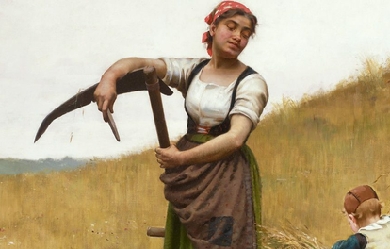
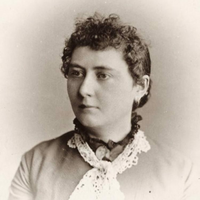
Isabella Valancy Crawford (25 December 1846– 12 February 1887) was an Irish-born Canadian writer and poet. She was one of the first Canadians to make a living as a freelance writer. “Crawford is increasingly being viewed as Canada’s first major poet.” She is the author of “Malcolm’s Katie,” a poem that has achieved “a central place in the canon of nineteenth-century Canadian poetry.” Life Isabella Valancy Crawford was the last surviving daughter of Dr. Stephen Crawford. She was born in Dublin, Ireland on Christmas Day, 1846. The family emigrated to Canada when she was ten years of age. Much of Isabella Crawford’s early life is unknown. By her own account she was born in Dublin, Ireland, the sixth daughter of Dr. Stephen Dennis Crawford and Sydney Scott; but “No record has been found of that marriage or of the birthdates and birthplaces of at least six children, of whom Isabella wrote that she was the sixth.” The family was in Canada by 1857; in that year, Dr. Crawford applied for a license to practice medicine in Paisley, Canada West. “In a few years, disease had taken nine of the twelve children, and a small medical practice had reduced the family to semi-poverty.” Dr. Crawford served as Treasurer of Paisley Township, but "a scandal of a missing $500 in misappropriated Township funds and the subsequent suicide of one of his bondsmen" caused the family to leave Paisley in 1861. By chance Dr. Crawford met Richard Strickland of Lakefield. Strickland invited the Crawfords to live at his home, out of charity, and because Lakefield did not have a doctor. There the family became acquainted with Strickland’s sisters, writers Susanna Moodie and Catherine Parr Traill. Isabella Crawford reportedly began writing at that time. She was also thought to be a close companion of Mrs. Traill’s daughter, Katharine (Katie). In 1869 the family moved to Peterborough, and Crawford began to write and publish poems and stories. Her first published poem, “A Vesper Star”, appeared in The Toronto Mail on Christmas Eve, 1873. "When Dr. Crawford died, on 3 July 1875, the three women"– Isabella, her mother, and her sister Emma, all who were left in the household– “became dependent on Isabella’s literary earnings.” After Emma died of tuberculosis, "Isabella and her mother moved in 1876 to Toronto, which was the centre of the publishing world in Canada.” “Although Isabella had been writing while still living in Lakefield... and had published poems in Toronto newspapers and stories in American magazines while living in Peterborough, when she moved to Toronto she turned her attention in earnest to the business of writing.” “During this productive period she contributed numerous serialized novels and novellas to New York and Toronto publications,” “including the Mail, the Globe, the National, and the Evening Telegram. She also contributed ”a quantity of 'occasional’ verse to the Toronto papers... and articles for the Fireside Monthly. In 1886 she became the first local writer to have a novel, A little Bacchante, serialized in the Evening Globe. In her lifetime Crawford published only one book, Old Spookses’ Pass, Malcolm’s Katie and Other Poems in 1884. It was privately printed and sold poorly. Crawford paid for the printing of 1,000 copies, and presumably sent out many review copies; “there were notices in such London journals as the Spectator, the Graphic, the Leisure Hour, and the Saturday Review. These articles pointed to ‘versatility of talent,’ and to such qualities as ‘humour, vivacity, and range of power,’ which were impressive and promising despite her extravagance of incident and ‘untrained magniloquence.’” However, only 50 books sold. “Crawford was understandably disappointed and felt she had been neglected by 'the High Priests of Canadian Periodical Literature’” (Arcturus 84).” Crawford died on 12 February 1887 in Toronto. She was buried in Peterborough’s Little Lake Cemetery near the Otonabee River. She had died in poverty and for years her body lay in an unmarked grave. A fundraising campaign was begun in 1899, and on 2 November 1900, a six-foot Celtic Cross was raised above her grave, inscribed: "Isabella Valancy Crawford / Poet / By the Gift of God.” Writing Crawford was a prolific writer. “For the most part Crawford’s prose followed the fashion of the feuilleton of the day.” Her magazine writing “displays a skilful and energetic use of literary conventions made popular by Dickens, such as twins and doubles, mysterious childhood disappearances, stony-hearted fathers, sacrificial daughters, wills and lost inheritances, recognition scenes, and, to quote one of her titles, 'A kingly restitution’.” As a whole, though, it “was romantic-Gothic ‘formula fiction.’” It is her poetry that has endured. Just two years after her death, W.D. Lighthall included generous selections from her book in his groundbreaking 1889 anthology, Songs of the Great Dominion, bringing it to a wider audience. “In the 20th century critics have given the work increasing respect and appreciation." "Crawford’s Collected Poems were edited (Toronto 1905) by J.W. Garvin, with an introduction by Ethelwyn Wetherald," a popular Canadian poet. Wetherald called Crawford “purely a genius, not a craftswoman, and a genius who has patience enough to be an artist.” In his 1916 anthology, Canadian Poets, Garvin stated that Crawford was “one of the greatest of women poets.” Poet Katherine Hale, Garvin’s wife, published a volume on Isabella Valancy Crawford in the 1920s Makers of Canada series. All of this helped Crawford’s poetry become more widely known. . A "serious critical assessment began in the mid-1940s with A.J.M. Smith, Northrop Frye, and E.K. Brown, who called her ‘the only Canadian woman poet of real importance in the last century.’" "Recognition of Isabella Valancy Crawford’s extraordinary mythopoeic power, and her structural use of images, came... in James Reaney’s lecture 'Isabella Valancy Crawford’ in Our living tradition (series 3, 1959)." Then a “renewed interest in Crawford resulted in the publication of forgotten manuscripts and critical articles” in the 1970s. "A reprint of the collected poems in 1972, with an introduction by poet James Reaney, made Crawford’s work generally available; six of her short stories, edited by Penny Petrone, appeared in 1975; and in 1977 the Borealis Press published a book of fairy stories and a long unfinished poem, ‘Hugh and Ion.’.” Crawford wrote a wide variety of poems, ranging from the Walter Scott-like doggerel (pun intended) of “Love Me, Love My Dog”, to the eerie mysticism of “The Camp of Souls” to the eroticism of The Lily Bed. But it is mainly Crawford’s "long narrative poems [that] have received particular attention." “Old Spookses’ Pass” is a dialect poem, set in the Rocky Mountains, concerning a dream vision of a midnight cattle stampede towards a black abyss that is stilled by a whirling lariat; “The helot” makes use of the Spartans’ practice of intoxicating their helots to teach their own children not to drink, as the starting-point for a highly incantatory and hypnotic poem that ends in Bacchic possession and death; and “Gisli the Chieftain” fuses mythic elements, such as the Russian spring goddess Lada and the Icelandic Brynhild, into a narrative of love, betrayal, murder, and reconciliation. These poems follow a pattern of depicting the world as a battleground of opposites– light and dark, good and evil– reconciled by sacrificial love.” Malcolm’s Katie The bulk of critical attention has gone to “Malcolm’s Katie.” That poem is a long narrative in blank verse, dealing mainly with the love and trials of young Max and Katie in the 19th-century Canadian bush, but containing a second running narrative recounting the war between the North and South Winds (Winter and Summer personified as First Nations warriors), and also a collection of love songs in different stanza forms. Many of those lauding the poem have seen their own interests reflected in it. For instance, socialist Livesay gave a reading that made the poem sound like a manifesto of Utopian socialism: Crawford presents a new myth of great significance to Canadian literature: the Canadian frontier as creating ‘the conditions for a new Eden,’ not a golden age or a millennium, but ‘a harmonious community, here and now.’ Crawford’s social consciousness and concern for humanity’s future committed her, far ahead of her time and milieu, to write passionate pleas for brotherhood, pacifism, and the preservation of a green world. Her deeply felt belief in a just society wherein men and women would have equal status in a world free from war, class hatred, and racial prejudice dominates all her finest poetry.” Others have similarly seen their concerns reflected in the poem. “Malcolm’s Katie has been given a nationalistic reading by Robin Mathews, a feminist reading by Clara Thomas, a biographical reading by Dorothy Farmiloe and a Marxian reading by Kenneth Hughes, as well as various literary-historical readings by Dorothy Livesay, Elizabeth Waterston, John Ower, Robert Alan Burns and others.” Not just interpretations on the poem’s meaning, but evaluations of its worth, have varied widely. Its detractors have included poet Louis Dudek, who called Crawford “'a failed poet’ of 'hollow convention... counterfeit feeling... and fake idealism’”; and Roy Daniells, who in The Literary History of Canada (1965) called “Malcolm’s Katie” “a preposterously romantic love story on a Tennysonian model in which a wildly creaking plot finally delivers true love safe and triumphant.” Some of the poem’s supporters concede the Tennyson influence but point out that there is much more to it: “While appearing on the surface melodramatic and stereotyped, Crawford’s love story is compelling and powerful; what seems at first a conventional conflict between rival suitors for the hand of the heroine becomes a serious, even profound, account of philosophical, social and ideological confrontations.” “In ‘Malcolm’s Katie’ Crawford adapted to the setting of pioneer Canada the domestic idyll as she learned it from Tennyson. Striking and new, however, is Crawford’s location of Max and Katie’s conventional love story within a context of Native legends—Indian Summer and the battle of the North and South Winds.” This myth telling (however accurate it was as a portrayal of First Nations beliefs) is what many of its supporters see as giving the poem its power. For instance, writing about “Malcolm’s Katie, critic Northrop Frye pronounced Crawford ”the most remarkable mythopoeic imagination in Canadian poetry": the “framework’ of Isabella Crawford is that of an intelligent and industrious female songbird of the kind who filled so many anthologies in the last century. Yet the ”South Wind" passage from Malcolm’s Katie is only the most famous example of the most remarkable mythopoeic imagination in Canadian poetry. She puts her myth in an Indian form, which reminds us of the resemblance between white and Indian legendary heroes in the New World, between Paul Bunyan and Davy Crockett on the one hand and Glooscap on the other. The white myths are not necessarily imitated from the Indian ones, but they may have sprung from an unconscious feeling that the primitive myth expressed the imaginative impact of the country as more artificial literature could never do.” Frye believed, and thought Crawford’s “poetic sense” told her, “that the most obvious development in the romantic landscape is toward the mythological”; and he saw Crawford’s attempt at an indigenous Canadian myth as the intellectual equivalent of the simultaneous pioneer exploration and settlement: “In the long mythopoeic passage from Isabella Crawford’s Malcolm’s Katie, beginning ‘The South Wind laid his moccasins aside,’ we see how the poet is, first, taming the landscape imaginatively, as settlement tames it physically, by animating the lifeless scene with humanized figures, and, second, integrating the literary tradition of the country by deliberately re-establishing the broken cultural link with Indian civilization.” Hugh and Ion Dorothy Livesay, researching Crawford’s life for the Dictionary of Canadian Biography in 1977, discovered the manuscript of an uncompleted narrative poem in the Crawford fonds at Kingston, Ontario’s Queen’s University. Called Hugh and Ion, it deals with "Hugh and Ion, two friends who have fled the noxious city—probably contemporary Toronto—for purification in the primal wilderness [and] carry on a sustained dialogue, Hugh arguing for hope, light, and redemption and Ion pointing out despair, darkness, and intractable human perversity." Perhaps due to Crawford’s Toronto experiences, this last poem marked a significant change in her views, showing the city as “a demonic, urban world of isolation and blindness which has wilfully cut itself off from the regenerative power of the wildernese. The confident innocence and romantic idealism, which account for much of the inner fire of Malcolm’s Katie, have simply ceased to be operative.... Nowhere else in nineteenth-century Canadian literature, with the exception of Lampman’s ”the End of Things", is there another example of the creative imagination being brought to bear, in so Blakean a manner, on the nascent social evils of the ‘infant city.’” Recognition Isabella Valancy Crawford was designated a Person of National Historic Significance in 1947. A small garden park in downtown Toronto, at Front and John Streets (near the CN Tower), has been named Isabella Valancy Crawford Park.

Hi I'm Calis an actor and wannabe poet. I'm here to network and find interesting things to talk about, I'm moving to London next year to follow my dream as an actor and I need all the help I can get! Please read my work and let me know what you think and I'll recommend your work in return, we can all work together here to help each other

Alice Guerin Crist (1876–1941) was an Australian poet, author and journalist born in Clare Castle, Ireland on 6 February 1876 to Patrick and Winifred (née Rohan or Rouhan) Guerin. When she was two years old, the family migrated to Queensland, where her father taught in rural schools, including as head teacher of Tent Hill Upper school in May 1880.
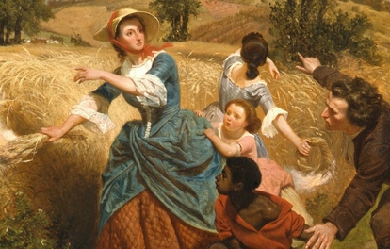
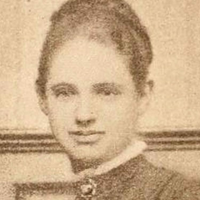
Mary Elizabeth Coleridge (23 September 1861– 25 August 1907) was a British novelist and poet who also wrote essays and reviews. She taught at the London Working Women’s College for twelve years from 1895 to 1907. She wrote poetry under the pseudonym Anodos, taken from George MacDonald; other influences on her were Richard Watson Dixon and Christina Rossetti. Robert Bridges, the Poet Laureate, described her poems as 'wonderously beautiful… but mystical rather and enigmatic’. Coleridge published five novels, the best known of those being The King with Two Faces, which earned her £900 in royalties in 1897. She travelled widely throughout her life, although her home was in London, where she lived with her family. Her father was Arthur Duke Coleridge who, along with the singer Jenny Lind, was responsible for the formation of the London Bach Choir in 1875. Other family friends included Robert Browning, Alfred, Lord Tennyson, John Millais and Fanny Kemble. Mary Coleridge was the great-grandniece of Samuel Taylor Coleridge and the great niece of Sara Coleridge, the author of Phantasmion. She died from complications arising from appendicitis while on holiday in Harrogate in 1907, leaving an unfinished manuscript for her next novel and hundreds of unpublished poems. Eight of her poems, including “The Blue Bird”, were set to music for chorus by Charles Villiers Stanford, and “Thy Hand in Mine” was set by Frank Bridge. A family friend, the composer Hubert Parry, also set several of her poems as songs for voice and piano. Published works Fancy’s Following. Oxford: Daniel, 1896 (poems) The King with Two Faces. London: Edward Arnold, 1897 The Seven Sleepers of Ephesus. London: Chatto & Windus, 1898 Non Sequitur. London: J. Nisbet, 1900 (essays) The Fiery Dawn. London: Edward Arnold, 1901 The Shadow on the Wall: a romance. London: Edward Arnold, 1904 The Lady on the Drawingroom Floor. London: Edward Arnold, 1906kiren Holman Hunt. London: T. C. & E. C. Jack; New York: F. A. Stokes Co., [1908] (three numbers of Masterpieces in Colour issued together: Millais / by A. L. Baldry– Holman Hunt / by M. E. Coleridge– Rossetti / by L. Pissarro.) Poems by Mary E. Coleridge. London: Elkin Mathews, 1908 Songs not listed
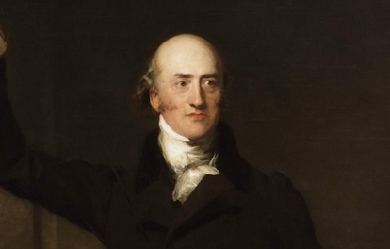
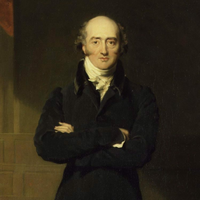
George Canning, FRS, (11 April 1770– 8 August 1827) was a British statesman and Tory politician who served in various senior cabinet positions under numerous Prime Ministers, before himself serving as Prime Minister for the final four months of his life. The son of an actress and a failed businessman and lawyer, Canning was supported financially by his uncle Stratford, allowing him to attend Eton College and Christ Church, Oxford. Canning entered politics in 1793 and rose rapidly. He was Paymaster of the Forces (1800–01) and Treasurer of the Navy (1804–06) under William Pitt the Younger and Foreign Secretary (1807–09) under the Duke of Portland. In 1809, he was wounded in a duel with his foe Lord Castlereagh and was shortly thereafter passed over as a potential prime ministerial successor to the Duke of Portland in favour of Spencer Perceval. He rejected overtures to serve as Foreign Secretary again, owing to Castlereagh’s presence in Perceval’s Cabinet, and he remained out of high office until after Perceval was assassinated in 1812. Canning subsequently served under new Prime Minister the Earl of Liverpool as British Ambassador to Portugal (1814–16), President of the Board of Control (1816–21), and Foreign Secretary and Leader of the House of Commons (1822–27). When Lord Liverpool resigned in ailing health in April 1827, Canning was chosen to succeed him as Prime Minister ahead of the Duke of Wellington and Sir Robert Peel. They both declined to serve under Canning and the Tories split between Peel and Wellington’s Ultra-Tories and the Canningites. Canning thus invited several Whigs to join his cabinet. However, his administration did not last long. His health declined and he died in office in August 1827, after just 119 days in office, the shortest tenure of any British Prime Minister. Early life Canning was born into an Anglo-Irish family at his parents’ home in Queen Anne Street, Marylebone, London. Canning described himself as “an Irishman born in London”. His father, George Canning, Sr., of Garvagh, County Londonderry, Ireland, was a gentleman of limited means, a failed wine merchant and lawyer, who renounced his right to inherit the family estate in exchange for payment of his substantial debts. George Sr. eventually abandoned the family and died in poverty on 11 April 1771, his son’s first birthday, in London. Canning’s mother, Mary Anne Costello, took work as a stage actress, a profession not considered respectable at the time. Indeed, when in 1827 it looked as if Canning would become Prime Minister, Lord Grey remarked that “the son of an actress is, ipso facto, disqualified from becoming Prime Minister”. Because Canning showed unusual intelligence and promise at an early age, family friends persuaded his uncle, London merchant Stratford Canning (father to the diplomat Stratford Canning), to become his nephew’s guardian. George Canning grew up with his cousins at the home of his uncle, who provided him with an income and an education. Stratford Canning’s financial support allowed the young Canning to study at Hyde Abbey School, Eton College and Christ Church, Oxford. Canning came out top of the school at Eton and left at the age of seventeen. His time at Eton has been described as “a triumph almost without parallel. He proved a brilliant classicist, came top of the school, and excelled at public orations”. Canning struck up friendships with the future Lord Liverpool as well as with Granville Leveson-Gower and John Hookham Frere. In 1789 he won a prize for his Latin poem The Pilgrimage to Mecca which he recited in Oxford Theatre. Canning began practising law after receiving his BA from Oxford in the summer of 1791, but he wished to enter politics. Entry into politics Stratford Canning was a Whig and would introduce his nephew in the 1780s to prominent Whigs such as Charles James Fox, Edmund Burke, and Richard Brinsley Sheridan. George Canning’s friendship with Sheridan would last for the remainder of Sheridan’s life. George Canning’s impoverished background and limited financial resources, however, made unlikely a bright political future in a Whig party whose political ranks were led mostly by members of the wealthy landed aristocracy in league with the newly rich industrialist classes. Regardless, along with Whigs such as Burke, Canning himself would become considerably more conservative in the early 1790s after witnessing the excessive radicalism of the French Revolution. “The political reaction which then followed swept the young man to the opposite extreme; and his vehemence for monarchy and the Tories gave point to a Whig sarcasm,—that men had often turned their coats, but this was the first time a boy had turned his jacket.” So when Canning decided to enter politics he sought and received the patronage of the leader of the “Tory” group, William Pitt the Younger. In 1793, thanks to the help of Pitt, Canning became a member of parliament for Newtown on the Isle of Wight, a rotten borough. In 1796, he changed seats to a different rotten borough, Wendover in Buckinghamshire. He was elected to represent several constituencies during his parliamentary career. Canning rose quickly in British politics as an effective orator and writer. His speeches in Parliament as well as his essays gave the followers of Pitt a rhetorical power they had previously lacked. Canning’s skills saw him gain leverage within the Pittite faction that allowed him influence over its policies along with repeated promotions in the Cabinet. Over time, Canning became a prominent public speaker as well, and was one of the first politicians to campaign heavily in the country. As a result of his charisma and promise, Canning early on drew to himself a circle of supporters who would become known as the Canningites. Conversely though, Canning had a reputation as a divisive man who alienated many. He was a dominant personality and often risked losing political allies for personal reasons. He once reduced Lord Liverpool to tears with a long satirical poem mocking Liverpool’s attachment to his time as a colonel in the militia. He then forced Liverpool to apologise for being upset. Under Secretary of State for Foreign Affairs On 2 November 1795, Canning received his first ministerial post: Under Secretary of State for Foreign Affairs. In this post he proved a strong supporter of Pitt, often taking his side in disputes with the Foreign Secretary, Lord Grenville. At the end of 1798 Canning responded to a resolution by George Tierney MP for peace negotiations with France: I for my part still conceive it to be the paramount duty of a British member of parliament to consider what is good for Great Britain... I do not envy that man’s feelings, who can behold the sufferings of Switzerland, and who derives from that sight no idea of what is meant by the deliverance of Europe. I do not envy the feelings of that man, who can look without emotion at Italy– plundered, insulted, trampled upon, exhausted, covered with ridicule, and horror, and devastation– who can look at all this, and be at a loss to guess what is meant by the deliverance of Europe? As little do I envy the feelings of that man, who can view the peoples of the Netherlands driven into insurrection, and struggling for their freedom against the heavy hand of a merciless tyranny, without entertaining any suspicion of what may be the sense of the word deliverance. Does such a man contemplate Holland groaning under arbitrary oppressions and exactions? Does he turn his eyes to Spain trembling at the nod of a foreign master? And does the word deliverance still sound unintelligibly in his ear? Has he heard of the rescue and salvation of Naples, by the appearance and the triumphs of the British fleet? Does he know that the monarchy of Naples maintains its existence at the sword’s point? And is his understanding, and his heart, still impenetrable to the sense and meaning of the deliverance of Europe? Pitt called this speech “one of the best ever heard on any occasion”. He resigned his position at the Foreign Office on 1 April 1799. The Anti-Jacobin Canning was involved in the founding of the Anti-Jacobin, a newspaper which was published on every Monday from 20 November 1797 to 9 July 1798. Its purpose was to support the government and condemn revolutionary doctrines through news and poetry, much of it written by Canning. Canning’s poetry satirised and ridiculed Jacobin poetry. Before the appearance of the Anti-Jacobin all the eloquence (except for Burke’s) and all the wit and ridicule had been on the side of Fox and Sheridan. Canning and his friends changed this. A young Whig, William Lamb (the future Lord Melbourne, Prime Minister) wrote an 'Epistle to the Editors of the Anti-Jacobin’, which attacked Canning: Who e’er ye are, all hail!– whether the skill Of youthful CANNING guides the ranc’rous quill; With powers mechanic far above his age, Adapts the paragraph and fills the page; Measures the column, mends what e’er’s amiss, Rejects THAT letter, and accepts of THIS; Subsequent offices In 1799 Canning became a Commissioner of the Board of Control for India. Canning wrote on 16 April: “Here I am immersed in papers, of which I do not yet comprehend three words in succession; but I shall get at their meaning by degrees and at my leisure. No such hard work here as at my former office. No attendance but when I like it, when there are interesting letters received from India (as is now the case) or to be sent out there”. Canning was appointed Paymaster of the Forces (and therefore to the Privy Council as well) in 1800. In February 1801 Pitt resigned as Prime Minister due to the King’s opposition to Catholic Emancipation. Canning, despite Pitt’s advice to stay in office, loyally followed him into opposition. The day after Canning wrote Lady Malmesbury: “I resign because Pitt resigns. And that is all”. Backbenches Canning disliked being out of office, and wrote on to John Hookham Frere in summer 1801: “But the thought will obtrude itself now and then that I am not where I should be– non-hoc pollicitus.” He also claimed that Pitt had done “scrupulously and magnanimously right by everyone but me”. At the end of September 1801 Canning wrote to Frere, saying of Pitt: “I do love him, and reverence him as I should a Father– but a Father should not sacrifice me, with my good will. Most heartily I forgive him, But he has to answer to himself, and to the country for much mischief that he has done and much that is still to do.” Pitt wished for Canning to enter Henry Addington’s government, a move which Canning looked on as a horrible dilemma but in the end he turned the offer down. Canning opposed the preliminaries of the Peace of Amiens signed on 1 October. He did not vote against it due to his personal devotion to Pitt. He wrote on 22 November: “I would risk my life to be assured of being able to act always with P in a manner satisfactory to my own feelings and sense of what is right, rather than have to seek that object in separation from him.” On 27 May 1802 in the Commons Canning requested that all grants of land in Trinidad (captured by Britain from Spain) should be rejected until Parliament had decided what to do with the island. The threat that it could be populated by slaves like other West Indian islands was real. Canning instead wanted it to have a military post and that it should be settled with ex-soldiers, free blacks and creoles, with the Native American population protected and helped. He also asserted that the island should be used to test the theory that better methods of cultivation in land would lessen the need for slaves. Addington acceded to Canning’s demands and the Reverend William Leigh believed Canning had saved 750,000 lives. At a dinner to celebrate Pitt’s birthday in 1802, Canning wrote the song ‘The Pilot that Weathered the Storm’, performed by a tenor from Drury Lane, Charles Dignum: And oh! if again the rude whirlwind should rise, The dawnings of peace should fresh darkness deform, The regrets of the good and the fears of the wise Shall turn to the Pilot that weathered the Storm. In November Canning spoke out openly in support of Pitt in the Commons. One observer thought that Canning made incomparably the best speech and that his defence of Pitt’s administration “one of the best things, either argumentatively as to matter, or critically and to manner and style” that he could ever remember. On 8 December Sheridan spoke out in defence of Addington and denied that Pitt was the only man who could save the country. Canning replied by criticising the Addington government’s foreign policy and claimed that the House should recognise the greatness of the country and Pitt, who ought to be its leader. He argued against those, such as William Wilberforce, who held that Britain could safely maintain a policy of isolation: “Let us consider the state of the world as it is, not as we fancy it ought to be. Let us not seek to hide from our own eyes... the real, imminent and awful danger which threatens us.” Also, he objected to the notion that Britain could choose between greatness and happiness: “The choice is not in our power. We have... no refuge in littleness. We must maintain ourselves what we are, or cease to have a political existence worth preserving.” Furthermore, he openly declared for Pitt and said: "Away with the cant of “measures, not men”, the idle supposition that it is the harness and not the horses that draw the chariot along." Kingdoms rise and fall due to what degree they are upheld “not by well-meaning endeavours... but by commanding, over-awing talents... retreat and withdraw as much as he will, he must not hope to efface the memory of his past services from the gratitude of his country; he cannot withdraw himself from the following of a nation; he must endure the attachment of a people whom he has saved.” In private Canning was fearful that if Pitt did not return to power, Fox would: “Sooner or later he must act or the country is gone.” Canning approved of the declaration of war against France on 18 May 1803. Canning was angered by Pitt’s desire not to proactively work to turn out the ministry but support the ministry when it adopted sound policies. However, in 1804, to Canning’s delight, Pitt began to work against the Addington government. After Pitt delivered a stinging attack on the government’s defence measures on 25 April, Canning launched his own attack on Addington, which made Addington furious. On 30 April Lord Eldon, the Lord Chancellor, asked Pitt to submit a new administration to the King. Treasurer of the Navy Canning returned to office in 1804 with Pitt, becoming Treasurer of the Navy. In 1805 he offered Pitt his resignation after Addington was given a seat in the Cabinet. He wrote to Lady Hester to say he felt humiliated that Addington was a minister “and I am– nothing. I cannot help it, I cannot face the House of Commons or walk the streets in this state of things, as I am”. After reading this letter Pitt summoned Canning to London for a meeting, where he told him that if he resigned it would open a permanent breach between the two of them as it would cast a slur on his conduct. He offered Canning the office of Chief Secretary for Ireland but he refused on the grounds that this would look like he was being got out of the way. Canning eventually decided not to resign and wrote that “I am resolved to ”sink or swim" with Pitt, though he has tied himself to such sinking company. God forgive him". Canning left office with the death of Pitt; he was not offered a place in Lord Grenville’s administration. Foreign Secretary Canning was appointed Foreign Secretary in the new government of the Duke of Portland in 1807. Given key responsibilities for the country’s diplomacy in the Napoleonic Wars, he was responsible for planning the attack on Copenhagen in September 1807, much of which he undertook at his country estate, South Hill Park at Easthampstead in Berkshire. After the defeat of Prussia by the French, the neutrality of Denmark looked increasingly fragile. Canning was worried that Denmark might, under French pressure, become hostile to Britain. On the night of 21/22 July 1807 Canning received intelligence directly from Tilsit (where Napoleon and Tsar Alexander I of Russia were negotiating a treaty) which appeared “to rest on good authority” that Napoleon had proposed to the Tsar a great naval combination against Britain, of which Denmark and Portugal would be members. On 30 July a military force 25,000 strong set sail for Denmark, with Francis Jackson travelling the day after. Canning instructed Jackson that his over-riding aim was to secure the possession of the Danish navy by offering the Danes a treaty of alliance and mutual defence and whereby they would be given back their fleet at the end of the war. On 31 July Canning wrote to his wife: "The anxious interval between this day and the hearing the result of his [Jackson’s] expedition will be long and painful indeed. Long, I mean, in feeling. In fact it will be about a fortnight or three weeks... I think we have made success almost certain. But the measure is a bold one and if it fails– why we must be impeached I suppose– and dearest dear will have a box at the trial". The day after he wrote that he had received a letter the previous night which provided an “account of the French being actually about to do that act of hostility, the possibility of which formed the groundwork of my Baltic plan. My fear was that the French might not be the aggressors– and then ours would have appeared a strong measure, fully justifiable I think and absolutely necessary, but without apparent necessity or justification. Now the aggression will justify us fully... I am therefore quite easy as to the morality and political wisdom of our plan”. Napoleon had on 31 July instructed his Foreign Minister, Talleyrand, to inform the Danes that if they did not wish for Holstein to be invaded and occupied by Jean Bernadotte they must prepare for war against Britain. Canning wrote to his wife on 1 August: "Now for the execution and I confess to my own love, I wake an hour or two earlier than I ought to, thinking of this execution. I could not sleep after asses’ milk today, thought I was not in bed till 1/2 p.2". On 25 August he wrote to Granville Leveson-Gower: “The suspense is, as you may well imagine, agitating and painful in the extreme; but I have an undiminished confidence as to the result, either by force or by treaty. The latter however is so infinitely preferable to the former that the doubt whether it has been successful is of itself almost as anxious as if the whole depended on it alone”. On 2 September, after Jackson’s negotiations proved unsuccessful, the British fleet began bombarding Copenhagen until when on 7pm 5 September the Danes requested a truce. On 7 September the Danes agreed to hand over their navy (18 ships of the line, 15 frigates and 31 smaller ships) and naval stores and the British agreed to evacuate Zealand within six weeks. On 16 September Canning received the news with relief and excitement: “Did I not tell you we would save Plumstead from bombardment?” he wrote to Revered William Leigh. On 24 September he wrote to George Rose: "Nothing was ever more brilliant, more salutary or more effectual than the success [at Copenhagen]". On 30 September he wrote Lord Boringdon that he hoped Copenhagen would “stun Russia into her sense again”. Canning wrote to Gower on 2 October 1807: “We are hated throughout Europe and that hate must be cured by fear”. After the news of Russia’s declaration of war against Britain reached London on 2 December, Canning wrote to Lord Boringdon two days later: “The Peace of Tilsit you see is come out. We did not want any more case for Copenhagen; but if we had, this gives it us”. On 3 February 1808 the opposition leader George Ponsonby requested the publication of all information on the strength and battle-worthiness of the Danish fleet sent by the British envoy at Copenhagen. Canning replied with a speech nearly three hours long, described by Lord Palmerston as “so powerful that it gave a decisive turn to the debate”. Lord Grey said his speech was “eloquent and powerful” but that he had never heard such “audacious misrepresentation” and “positive falsehood”. On 2 March the opposition moved a vote of censure over Copenhagen, defeated by 224 votes to 64 after Canning gave a speech, in the words of Lord Glenbervie, so “very witty, very eloquent and very able”. In November 1807, Canning oversaw the Portuguese royal family’s flight from Portugal to Brazil. Duel with Castlereagh In 1809 Canning entered into a series of disputes within the government that were to become famous. He argued with the Secretary of State for War and the Colonies, Lord Castlereagh, over the deployment of troops that Canning had promised would be sent to Portugal but which Castlereagh sent to the Netherlands. The government became increasingly paralysed in disputes between the two men. Portland was in deteriorating health and gave no lead, until Canning threatened resignation unless Castlereagh were removed and replaced by Lord Wellesley. Portland secretly agreed to make this change when it would be possible. Castlereagh discovered the deal in September 1809 and challenged Canning to a duel. Canning accepted the challenge and it was fought on 21 September 1809 on Putney Heath. Canning, who had never before fired a pistol, widely missed his mark. Castlereagh, who was regarded as one of the best shots of his day, wounded his opponent in the thigh. There was much outrage that two cabinet ministers had resorted to such a method. Shortly afterwards the ailing Portland resigned as Prime Minister, and Canning offered himself to George III as a potential successor. However, the King appointed Spencer Perceval instead, and Canning left office once more. He did take consolation, though, in the fact that Castlereagh also stood down. Upon Perceval’s assassination in 1812, the new Prime Minister, Lord Liverpool, offered Canning the position of Foreign Secretary once more. Canning refused, as he also wished to be Leader of the House of Commons and was reluctant to serve in any government with Castlereagh. Ambassador to Lisbon In 1814 he became the British Ambassador to Portugal, returning the following year. He received several further offers of office from Liverpool. President of the Board of Control In 1816 he became President of the Board of Control. Canning resigned from office once more in 1820, in opposition to the treatment of Queen Caroline, estranged wife of the new King George IV. Canning and Caroline were close friends and may have had a brief sexual affair. This would have been regarded as unacceptable. On 16 March 1821 Canning spoke in favour of William Plunket’s Catholic Emancipation Bill. Liverpool wished to have Canning back in the Cabinet but the King was strongly hostile to him due to his actions over the Caroline affair. The King would only allow Canning back into the Cabinet if he did not have to deal personally with him. This required the office of Governor-General of India. After deliberating on whether to accept, Canning initially declined the offer but then accepted it. On 25 April he spoke in the Commons against Lord John Russell’s motion for parliamentary reform and a few days later Canning moved for leave to introduce a measure of Catholic Emancipation (for lifting the exclusion of Catholics from the House of Lords). This passed the Commons but was rejected by the Lords. Foreign Secretary and Leader of the House In August 1822, Castlereagh, now Marquess of Londonderry, committed suicide. Instead of going to India, Canning succeeded him as both Foreign Secretary and Leader of the House of Commons. In his second term of office he sought to prevent South America from coming into the French sphere of influence, and in this he was successful. He also gave support to the growing campaign for the abolition of slavery. Despite personal issues with Castlereagh, he continued many of his foreign policies, such as the view that the powers of Europe (Russia, France, etc.) should not be allowed to meddle in the affairs of other states. This policy enhanced public opinion of Canning as a liberal. He also prevented the United States from opening trade with the West Indies. During his early period in the Foreign Office (1807–09) Canning became deeply involved in the affairs of Spain, Portugal and Latin America. He was responsible for a number of decisions that greatly affected the future course of Latin American history. Great Britain had a strong interest in ensuring the demise of Spanish colonialism, and to open the newly independent Latin American colonies to British trade. The Latin Americans received a certain amount of unofficial aid– arms and volunteers– from outside, but no outside official help at any stage from Britain or any other power. Britain also refused to aid Spain and opposed any outside intervention on behalf of Spain by other powers. Britain, and especially British sea power, was a decisive factor in the struggle for independence of certain Latin American countries. In 1825 Mexico, Argentina and Colombia were recognised by means of the ratification of commercial treaties with Britain. In November 1825 the first minister from a Latin American state, Colombia, was officially received in London. “Spanish America is free,” Canning declared, “and if we do not mismanage our affairs she is English... the New World established and if we do not throw it away, ours.” Also in 1825, Portugal recognised Brazil (thanks to Canning’s efforts, and in return for a preferential commercial treaty), less than three years after Brazil’s declaration of independence. On 12 December 1826, in the House of Commons, Canning was given an opportunity to defend the policies he had adopted towards France, Spain and Spanish America, and declared: “I resolved that if France had Spain it should not be Spain with the Indies. I called the New World into existence to redress the balance of the Old.” Canning pushed through, against great opposition, British recognition of Argentina, Colombia, Mexico and Brazil. In a sense, therefore, he brought part of the New World into political existence. The United States had recognised these states earlier, but recognition by the leading world power was to be decisive. Recognition by Britain was greeted with enthusiasm throughout Latin America. Canning, who was more concerned with Britain’s political and economic interests in Latin America than with Latin American independence, did a great deal to enhance Britain’s prestige throughout Latin America. He was esteemed as a great liberal statesman who understood and sympathised with the cause of Latin American independence and who did more than any other foreign statesman to make it a reality. George Canning deserves credit as the first British Foreign Secretary to devote a large proportion of his time and energies to the affairs of Latin America (as well as to those of Spain and Portugal) and to foresee the important political and economic role the Latin American states would one day play in the world. In 1826 he was elected a Fellow of the Royal Society. Prime Minister In 1827 Liverpool was forced to stand down as Prime Minister after suffering a severe stroke (and was to die the following year). Canning, as Liverpool’s right-hand man, was then chosen by George IV to succeed him, in preference to both the Duke of Wellington and Sir Robert Peel. Neither man agreed to serve under Canning, and they were followed by five other members of Liverpool’s Cabinet as well as 40 junior members of the government. The Tory party was now heavily split between the “High Tories” (or “Ultras”, nicknamed after the contemporary party in France) and the moderates supporting Canning, often called “Canningites”. As a result, Canning found it difficult to form a government and chose to invite a number of Whigs to join his Cabinet, including Lord Lansdowne. The government agreed not to discuss the difficult question of parliamentary reform, which Canning opposed but the Whigs supported. However, Canning’s health by this time was in steep decline: at the funeral of Frederick, Duke of York, which was held at night in an unheated chapel in January, he became so ill that it was thought he might not recover. He died on 8 August 1827, in the very same room where Charles James Fox met his own end, 21 years earlier. To this day Canning’s total period in office remains the shortest of any Prime Minister of the United Kingdom, a mere 119 days. He is buried in Westminster Abbey. Legacy Canning has come to be regarded as a “lost leader”, with much speculation about what his legacy could have been had he lived. His government of Tories and Whigs continued for a few months under Lord Goderich but fell apart in early 1828. It was succeeded by a government under the Duke of Wellington, which initially included some Canningites but soon became mostly “High Tory” when many of the Canningites drifted over to the Whigs. Wellington’s administration would soon go down in defeat as well. Some historians have seen the revival of the Tories from the 1830s onwards, in the form of the Conservative Party, as the overcoming of the divisions of 1827. What would have been the course of events had Canning lived is highly speculative. Rory Muir has described Canning as “the most brilliant and colourful minister, and certainly the greatest orator in the government at a time when oratory was still politically important. He was a man of biting wit and invective, with immense confidence in his own ability, who often inspired either great friendship or deep dislike and distrust... he was a passionate, active, committed man who poured his energy into whatever he undertook. This was his strength and also his weakness... the government’s ablest minister”. Greville recorded of Canning on the day after his death: “He wrote very fast, but not fast enough for his mind, composing much quicker than he could commit his ideas to paper. He could not bear to dictate, because nobody could write fast enough for him; but on one occasion, when he had the gout in his hand and could not write, he stood by the fire and dictated at the same time a despatch on Greek affairs to George Bentinck and one on South American politics to Howard de Walden, each writing as fast as he could, while he turned from one to the other without hesitation or embarrassment.” Places named after Canning The Canning River in Western Australia is named after George Canning. It flows into the Swan River south of Perth and has a number of districts named similarly (after the river, rather than Canning himself) on its banks, for example Cannington and Canning Vale. Elsewhere in Australia, there is a street in Melbourne, Australia named after him. The village of Canning in the Annapolis Valley of Nova Scotia is named after Canning. Cannington, Ontario, is a small village in Brock Township. A square in downtown Athens, Greece, is named after Canning (Πλατεία Κάνιγγος, Plateía Kánningos, Canning Square), in appreciation of his supportive stance toward the Greek War of Independence (1821–1830). In South America, a street in the city of Buenos Aires has been on-and-off named after Canning since 1893, changing away from the name in 1985. There is also a street in the Uruguayan capital of Montevideo named Jorge Canning, which is coincidentally the location of the British Residence. There is also a street named after him in the district of Ipanema, Rio de Janeiro, Brazil. In Santiago, Chile there two streets called Jorge (Spanish for George) Canning, one in the commune of San Joaquin and other, smaller, in the commune of Ñuñoa. One Street in Liverpool is named after George Canning; the surrounding Canning neighbourhood, also known as the “Georgian Quarter,” derives its name from the street. Canning Circus is an area at the top of Zion Hill in Nottingham. In his memory. Canning Terrace was erected as almshouses and a gatehouse to the adjacent cemetery. Canning Town in London is often thought of as being named after George Canning, but was in fact named after his son Charles Canning, 1st Earl Canning, Governor-General of India during the Indian Mutiny. Elsewhere in London, a Brixton public house on the corner of Effra Road and Brixton Water Lane was called the George Canning (it was renamed the Hobgoblin in the late 1990s and the Hootenanny in 2008). A Camberwell public house on Grove Lane near Denmark Hill station is called the George Canning. The seat of the Hispanic and Luso Brazilian Council in the Belgravia neighbourhood of London is named Canning House. It houses a research library and is used for a range of cultural and educational events. Fort Canning, a hill in Singapore, is actually named after Canning’s son Viscount Charles Canning although many mistakenly believe that it was named after George Canning himself. The hill was previously known simply as Government Hill and earlier as Bukit Larangan (Malay for Forbidden Hill) as it was once the seat for Malay royalty. Having served as an administrative centre for the British colonial administration in Singapore, it was then converted into a fort during World War I but wasn’t used till second world war. It is currently one of Singapore’s oldest urban parks. Canning is a district of Liverpool and Canning Place was the site of the famous Liverpool Sailors’ Home. The Canning Club, a gentlemen’s club in central London. Founded in 1911 as the Argentine Club for expatriate businessmen, it was renamed in 1948 as the club extended its remit to the rest of Latin America, in honour of Canning’s strong ties to the region. The club currently shares the premises of the Naval and Military Club in St. James’s Square. Family Canning married Joan Scott (later 1st Viscountess Canning) (1776–1837) on 8 July 1800, with John Hookham Frere and William Pitt the Younger as witnesses. George and Joan Canning had four children: George Charles Canning (1801–1820), died from consumption William Pitt Canning (1802–1828), died from drowning in Madeira, Portugal Harriet Canning (1804–1876), married the 1st Marquess of Clanricarde Charles John Canning (later 2nd Viscount Canning and 1st Earl Canning) (1812–1862) Canning’s Government, April– August 1827 George Canning– First Lord of the Treasury, Chancellor of the Exchequer and Leader of the House of Commons Lord Lyndhurst– Lord Chancellor Lord Harrowby– Lord President of the Council The Duke of Portland– Lord Privy Seal William Sturges Bourne– Secretary of State for the Home Department Lord Dudley– Secretary of State for Foreign Affairs Lord Goderich– Secretary of State for War and the Colonies and Leader of the House of Lords William Huskisson– President of the Board of Trade and Treasurer of the Navy Charles Williams-Wynn– President of the Board of Control Lord Bexley– Chancellor of the Duchy of Lancaster Lord Palmerston– Secretary at War Lord Lansdowne– Minister without Portfolio Changes May 1827– Lord Carlisle, the First Commissioner of Woods and Forests, enters the Cabinet July 1827– The Duke of Portland becomes a minister without portfolio. Lord Carlisle succeeds him as Lord Privy Seal. W. S. Bourne succeeds Carlisle as First Commissioner of Woods and Forests. Lord Lansdowne succeeds Bourne as Home Secretary. George Tierney, the Master of the Mint, enters the cabinet References Wikipedia—https://en.wikipedia.org/wiki/George_Canning
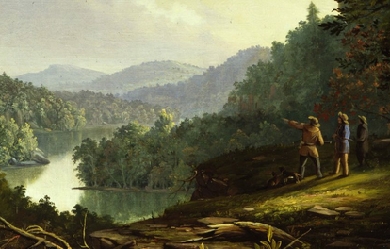
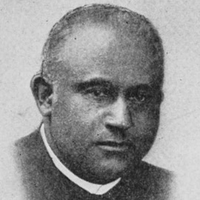
Joseph Seamon Cotter Sr. (February 2, 1861– March 14, 1949) was a poet, writer, playwright, and community leader raised in Louisville, Kentucky (but born in Nelson County, Kentucky). Cotter was one of the earliest African-American playwrights to be published. He was known as “Kentucky’s first Negro poet with real creative ability.” Born at the start of the American Civil War, raised in poverty with no formal education until the age of 22, and living through a time of monumental change, Cotter also became an educator and an advocate of black education. Personal life Cotter grew up in a family of mixed racial heritage. His father, Michael J. Cotter, was a white man of Scots-Irish ancestry, and his mother, Martha Vaughn, was a freeborn black of mixed heritage (one of several children born to an African slave mother and an English-Cherokee father). On July 22, 1891, Cotter married Maria F. Cox, a fellow teacher, with whom he had four children: Leonidas, Florence, Olivia, and Joseph Seamon Cotter Jr (a distinguished poet-playwright in his own merit). Education After completing the third grade, Cotter dropped out to help support his family. Cotter worked in manual labor and various odd jobs until the age of 22, where he joined the first and newly created Louisville night school for black students. Cotter attended night school for ten months, earning his high school diploma and teaching credentials. According to Metzger (1989): “There is little specific information about either the extent of Cotter’s education—it seems certain that he never attended college or completed a degree-granting program—or his professional life as an educator. Although some writers had felt that Cotter must have attended college, his love of writing and of literature might just have well stemmed from the many books that his mother had read to him as a child. And although Cotter’s contributions to black education are now seen as extremely important, at the time he was working, few details of such work were preserved for later study. What is now certain is that Cotter became a respected writer, although when he first began to write is not clear.” Career in education Once becoming qualified to teach, Cotter got his first job in the Cloverport Public School system. The conditions at Cloverport were extremely poor. Cotter made the best of teaching children in a small one-roomed school house with dirt flooring and no heating. This marked the start of Cotter’s long dedication to the education of black children and a commitment to his community. After two years teaching at Cloverport, Cotter taught at a nearby private school before moving to the Louisville Public School system two years later. His first job within the Louisville Public School system was at Western Colored School, which was located in an all-black neighborhood. Here Cotter would teach for the next four years, from 1889 to 1893. Attesting to his belief in black education, in 1893 Cotter founded the Paul Lawrence Dunbar School, named after the poet and friend Paul Laurence Dunbar. Cotter served as principal of this black high school until 1911, whereupon he took the position of principal at Samuel Coleridge-Taylor School and held the post until 1942. Along with his 53-year career as an educator, Cotter worked for racial advancement with many local and national organizations, including Louisville Colored Orphans Home Society, Kentucky Educational Association, Author’s League, Association for the Study of Negro Life and History, and NAACP. Literary contributions Cotter’s literary contributions include nine published works. Among these works are 4 volumes of poetry: A Rhyming (1895); Links of Friendship (1898); A White Song and a Black One (1909); and Collected Poems (1938). Cotter’s other publications include: Sequel to “The Pied Piper of Hamelin,” and Other Poems (1939), a collection of poetry and prose; Negroes and Others at Work and Play (1947); Caleb, the Degenerate; A Play in Four Acts: A Study of the Types, Customs, and Needs of the American Negro (1903); and 2 collections of prose, Negro Tales (1912), and Twenty-fifth Anniversary of the Founding of Colored Parkland or “Little Africa,” Louisville, Ky., 1891–1916 (1934). Cotter also often contributed to periodicals such as the Louisville Courier-Journal (from 1884), National Baptist Magazine (1894–1908), Voice of the Negro (1904–07), Southern Teachers Advocate (Kentucky; 1905-6), and Alexander’s Magazine (1909). According to William S. Ward, "…[Cotter’s] writings have never won him high recognition, but he has fared rather well at the hands of black historians." Cotter’s writing is known to utilize both dialect and standard English to advocate race advancement, “to be gained by a mixture of race pride, humility, hard work, education, and a positive, optimistic outlook.” Historian Joan R. Sherman also notes that a common theme seen in Cotter’s writing, from his earliest poems to The Negro’s Ten Commandments (1947), is that "he consistently advocated this gospel: (5) Read not thyself out of toiling with the hands, and toil not thyself out of reading; for reading makes one akin to the ox. Therefore he who simply dreams is dying, and he who dreams not is already dead. (7) Learn thou the worth of a dollar and how to keep it from damning thee. (9) Socially thou shalt go no nearer thy brother than he comes to thee. Aversion in him should slay the thought of advance in thee. (10) If thou hast a mind to live by being honest, industrious, frugal and self-sacrificing, remain in the South where thou shalt surely reap thy character’s worth; but if thou hast a mind to die through sloth, ignorance and folly, get thee far from it, for the burden of burying such is becoming intolerable.” Bibliography * Cotter, Joseph S. A Rhyming. Louisville, Ky.: New South Publishing, Co., 1895. 32 pp. Copy: DLC * Cotter, Joseph S. Links of Friendship. Louisville, Ky.: Bradley & Gilbert Co., 1898. 64 pp. 54 poems. Portrait. Copies: DHU, DLC, NN, NNSch. * Cotter, Joseph S. Caleb, the Degenerate; A Play in Four Acts: A Study of the Types, Customs, and Needs of the American Negro. Louisville, Ky.: Bradley & Gilbert Co., 1903. 57 pp. Portrait. *Copies: DHU, DLC, NN, NNSch copy inscribed by Cotter to the Rev. Edward Everett Hale. * Cotter, Joseph S. Negro Tales. New York: Cosmopolitan Press, 1912. 148 pp. 17 tales. Copies: DHU, NNsch. * Cotter, Joseph S. A White Song and a Black One. Louisville, Ky.: Bradley & Gilbert Co., 1909. 64 pp. 48 poems. Copies: DHU, DLC, NN, NNSch copy inscribed: “With compliments of Joseph S. Cotter.” * Cotter, Joseph S. Twenty-fifth Anniversary of the Founding of Colored Parkland or “Little Africa” Louisville, Ky., 1801–1916. 1934. Louisville, Ky.: I. Willis Cole Publishing Co., 1934. Copy: DHU. * Cotter, Joseph S. Collected Poems. New York: Henry Harrison, 1938. 78 pp. 73 poems. Portrait. Copies: DHU, DLC, NN, NNSch * Cotter, Joseph S. Sequel to “The Pied Piper of Hamelin,” and Other Poems. New York: Henry Harrison, 1939. 93 pp. 69 poems. Copies: DHU, DLC, NN, NNSch. Copies: DHU, DLC, NN, NNSch * Cotter, Joseph S. Negroes and Others at Work and Play. New York: Paebar Co., 1947. 63 pp. 7 poems, aphorisms, tales, sketches, plays, songs. Further reading * Brooks, A. Russell. “Joseph Seamon Cotter, Sr.,” In Dictionary of Literary Biography, vol. 50: 62–70. * Hatch, James V., ed. Black Theatre, U.S.A.: Forty-Five Plays by Black Americans. New York: Free Press/Macmillan, 1974. * Kerlin, Robert T. “A Poet from Bardstown.” South Atlantic Quarterly 20 (July 1921) 213-21. * Shockley, Ann Allen. “Joseph S. Cotter, Sr.: Biographical Sketch of a Black Louisville Bard,” College Language Association Journal 18 (March 1975), 327–340. * Townsend, John Wilson. “Kentucky’s Dunbar: Joseph Seamon Cotter.” In Lore of the Meadowland, 23–26. Lexington, Ky.: J.L. Richardson, 1911. References Wikipedia—https://en.wikipedia.org/wiki/Joseph_Seamon_Cotter,_Sr.

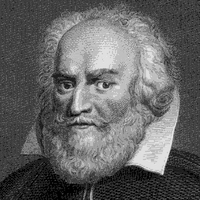
George Chapman (Hitchin, Hertfordshire, C. 1559– London,12 May 1634) was an English dramatist, translator, and poet. He was a classical scholar whose work shows the influence of Stoicism. Chapman has been identified as the Rival Poet of Shakespeare’s sonnets by William Minto, and as an anticipator of the Metaphysical Poets of the 17th century. Chapman is best remembered for his translations of Homer’s Iliad and Odyssey, and the Homeric Batrachomyomachia. Life and work Chapman was born at Hitchin in Hertfordshire. There is conjecture that he studied at Oxford but did not take a degree, though no reliable evidence affirms this. Very little is known about Chapman’s early life, but Mark Eccles uncovered records that reveal much about Chapman’s difficulties and expectations. In 1585 Chapman was approached in a friendly fashion by John Wolfall, Sr., who offered to supply a bond of surety for a loan to furnish Chapman money “for his proper use in Attendance upon the then Right Honorable Sir Rafe Sadler Knight.” Chapman’s courtly ambitions led him into a trap. He apparently never received any money, but he would be plagued for many years by the papers he had signed. Wolfall had the poet arrested for debt in 1600, and when in 1608 Wolfall’s son, having inherited his father’s papers, sued yet again, Chapman’s only resort was to petition the Court of Chancery for equity. As Sadler died in 1587, this gives Chapman little time to have trained under him. It seems more likely that he was in Sadler’s household from 1577–83, as he dedicates all his Homerical translations to him. Chapman spent the early 1590s abroad, and saw military action in the Low Countries fighting under renowned English general Sir Francis Vere. His earliest published works were the obscure philosophical poems The Shadow of Night (1594) and Ovid’s Banquet of Sense (1595). The latter has been taken as a response to the erotic poems of the age, such as Philip Sidney’s Astrophil and Stella and Shakespeare’s Venus and Adonis. Chapman’s life was troubled by debt and his inability to find a patron whose fortunes did not decline: Robert Devereux, Second Earl of Essex and the Prince of Wales, Prince Henry both met their ends prematurely. The former was executed for treason by Elizabeth I in 1601, and the latter died of typhoid fever at the age of eighteen in 1612. Chapman’s resultant poverty did not diminish his ability or his standing among his fellow Elizabethan poets and dramatists. Chapman died in London, having lived his latter years in poverty and debt. He was buried at St Giles in the Fields. A monument to him designed by Inigo Jones marked his tomb, and stands today inside the church. Plays Comedies By the end of the 1590s, Chapman had become a successful playwright, working for Philip Henslowe and later for the Children of the Chapel. Among his comedies are The Blind Beggar of Alexandria (1596; printed 1598), An Humorous Day’s Mirth (1597; printed 1599), All Fools (printed 1605), Monsieur D’Olive (1605; printed 1606), The Gentleman Usher (printed 1606), May Day (printed 1611), and The Widow’s Tears (printed 1612). His plays show a willingness to experiment with dramatic form: An Humorous Day’s Mirth was one of the first plays to be written in the style of “humours comedy” which Ben Jonson later used in Every Man in his Humour and Every Man Out of his Humour. With The Widow’s Tears, he was also one of the first writers to meld comedy with more serious themes, creating the tragicomedy later made famous by Beaumont and Fletcher. He also wrote one noteworthy play in collaboration. Eastward Ho (1605), written with Jonson and John Marston, contained satirical references to the Scots which landed Chapman and Jonson in jail. Various of their letters to the king and noblemen survive in a manuscript in the Folger Library known as the Dobell MS, and published by AR Braunmuller as A Seventeenth Century Letterbook. In the letters, both men renounced the offending line, implying that Marston was responsible for the injurious remark. Jonson’s “Conversations With Drummond” refers to the imprisonment, and suggests there was a possibility that both authors would have their “ears and noses slit” as a punishment, but this may have been Jonson elaborating on the story in retrospect. Chapman’s friendship with Jonson broke down, perhaps as a result of Jonson’s public feud with Inigo Jones. Some satiric, scathing lines, written sometime after the burning of Jonson’s desk and papers, provide evidence of the rift. The poem lampooning Jonson’s aggressive behaviour and self-believed superiority remained unpublished during Chapman’s lifetime; it was found in documents collected after his death. Tragedies Chapman’s greatest tragedies took their subject matter from recent French history, the French ambassador taking offence on at least one occasion. These include Bussy D’Ambois (1607), The Conspiracy and Tragedy of Charles, Duke of Byron (1608), The Revenge of Bussy D’Ambois (1613) and The Tragedy of Chabot, Admiral of France (published 1639). The two Byron plays were banned from the stage—although, when the Court left London, the plays were performed in their original and unexpurgated forms by the Children of the Chapel. The French ambassador probably took offence to a scene which portrays Henry IV’s wife and mistress arguing and physically fighting. On publication, the offending material was excised, and Chapman refers to the play in his dedication to Sir Thomas Walsingham as “poore dismembered Poems.” His only work of classical tragedy, Caesar and Pompey (ca. 1613?) is generally regarded as his most modest achievement in the genre. Other plays Chapman wrote one of the most successful masques of the Jacobean era, The Memorable Masque of the Middle Temple and Lincoln’s Inn, performed on 15 February 1613. According to Kenneth Muir, The Masque of the Twelve Months, performed on Twelfth Night 1619 and first printed by John Payne Collier in 1848 with no author’s name attached, is also ascribed to Chapman. Chapman’s authorship has been argued in connection with a number of other anonymous plays of his era. F. G. Fleay proposed that his first play was The Disguises. He has been put forward as the author, in whole or in part, of Sir Giles Goosecap, Two Wise Men And All The Rest Fools, The Fountain Of New Fashions, and The Second Maiden’s Tragedy. Of these, only 'Sir Gyles Goosecap’ is generally accepted by scholars to have been written by Chapman (The Plays of George Chapman: The Tragedies, with Sir Giles Goosecap, edited by Allan Holaday, University of Illinois Press, 1987). In 1654, bookseller Richard Marriot published the play Revenge for Honour as the work of Chapman. Scholars have rejected the attribution; the play may have been written by Henry Glapthorne. Alphonsus Emperor of Germany (also printed 1654) is generally considered another false Chapman attribution. The lost plays The Fatal Love and A Yorkshire Gentlewoman And Her Son were assigned to Chapman in Stationers’ Register entries in 1660. Both of these plays were among the ones destroyed in the famous kitchen burnings by John Warburton’s cook. The lost play Christianetta (registered 1640) may have been a collaboration between Chapman and Richard Brome, or a revision by Brome of a Chapman work. Poet and translator Other poems by Chapman include: De Guiana, Carmen Epicum (1596), on the exploits of Sir Walter Raleigh; a continuation of Christopher Marlowe’s unfinished Hero and Leander (1598); and Euthymiae Raptus; or the Tears of Peace (1609). Some have considered Chapman to be the “rival poet” of Shakespeare’s Sonnets. From 1598 he published his translation of the Iliad in installments. In 1616 the complete Iliad and Odyssey appeared in The Whole Works of Homer, the first complete English translation, which until Pope’s was the most popular in the English language and was the way most English speakers encountered these poems. The endeavour was to have been profitable: his patron, Prince Henry, had promised him £300 on its completion plus a pension. However, Henry died in 1612 and his household neglected the commitment, leaving Chapman without either a patron or an income. In an extant letter, Chapman petitions for the money owed him; his petition was ineffective. Chapman’s translation of the Odyssey is written in iambic pentameter, whereas his Iliad is written in iambic heptameter. (The Greek original is in dactylic hexameter.) Chapman often extends and elaborates on Homer’s original contents to add descriptive detail or moral and philosophical interpretation and emphasis. Chapman’s translation of Homer was much admired by John Keats, notably in his famous poem On First Looking into Chapman’s Homer, and also drew attention from Samuel Taylor Coleridge and T. S. Eliot. Chapman also translated the Homeric Hymns, the Georgics of Virgil, The Works of Hesiod (1618, dedicated to Francis Bacon), the Hero and Leander of Musaeus (1618), and the Fifth Satire of Juvenal (1624). Chapman’s poetry, though not widely influential on the subsequent development of English poetry, did have a noteworthy effect on the work of T. S. Eliot. Homage In Percy Bysshe Shelley’s poem The Revolt of Islam, Shelley quotes a verse of Chapman’s as homage within his dedication "to Mary__ __", presumably his wife Mary Shelley: There is no danger to a man, that knows What life and death is: there's not any law Exceeds his knowledge; neither is it lawful That he should stoop to any other law. The Irish playwright Oscar Wilde quoted the same verse in his part fiction, part literary criticism, “The Portrait of Mr. W.H.”. The English poet John Keats wrote “On First Looking into Chapman’s Homer” for his friend Charles Cowden Clarke in October 1816. The poem begins “Much have I travell’d in the realms of gold” and is much quoted. For example, P. G. Wodehouse in his review of the first novel of The Flashman Papers series that came to his attention: “Now I understand what that 'when a new planet swims into his ken’ excitement is all about.” Arthur Ransome uses two references from it in his children’s books, the Swallows and Amazons series. Quotes From All Fooles, II.1.170-178, by George Chapman: I could have written as good prose and verse As the most beggarly poet of 'em all, Either Accrostique, Exordion, Epithalamions, Satyres, Epigrams, Sonnets in Doozens, or your Quatorzanies, In any rhyme, Masculine, Feminine, Or Sdrucciola, or cooplets, Blancke Verse: Y'are but bench-whistlers now a dayes to them That were in our times.... References Wikipedia—https://en.wikipedia.org/wiki/George_Chapman
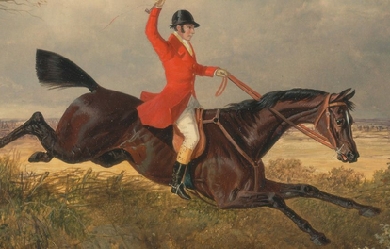
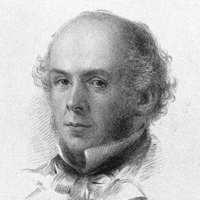
Arthur Hugh Clough (/klʌf/ KLUF; 1 January 1819– 13 November 1861) was an English poet, an educationalist, and the devoted assistant to ground-breaking nurse Florence Nightingale. He was the brother of suffragist Anne Clough, who became principal of Newnham College, Cambridge. Life Arthur Clough was born in Liverpool to James Butler Clough, a cotton merchant of Welsh descent, and Anne Perfect, from Pontefract in Yorkshire. In 1822 the family moved to the United States, and Clough’s early childhood was spent mainly in Charleston, South Carolina. In 1828 Clough and his older brother Charles returned to England to attend school in Chester. Holidays were often spent at Beaumaris. In 1829 Clough began attending Rugby School, then under Thomas Arnold, whose strenuous views on life and education he accepted. (See Muscular Christianity.) Cut off to a large degree from his family, he passed a somewhat solitary boyhood, devoted to the school and to early literary efforts in the Rugby Magazine. In 1836 his parents returned to Liverpool, and in 1837 he won a scholarship to Balliol College, Oxford. Here his contemporaries included Benjamin Jowett, Arthur Penrhyn Stanley, John Campbell Shairp, William George Ward and Frederick Temple. Matthew Arnold, four years his junior, arrived the term after Clough had graduated. Clough and Arnold enjoyed an intense friendship in Oxford. Oxford, in 1837, was in the full swirl of the High Church movement led by John Henry Newman. Clough was for a time influenced by this movement, but eventually rejected it. He surprised everyone by graduating from Oxford with only Second Class Honours, but won a fellowship with a tutorship at Oriel College. He became unwilling to teach the doctrines of the Church of England, as his tutorship required of him, and in 1848 he resigned the position and traveled to Paris, where he witnessed the revolution of 1848. Returning to England in a state of euphoria, he wrote his long poem The Bothie of Tober-na-Vuolich, a farewell to the academic life, following it up with poems from his time as student and tutor, in the shared publication Ambarvalia. In 1849, he witnessed another revolution, the siege of the Roman Republic, which inspired another long poem, Amours de Voyage (reprinted by Persephone Books in 2009). Easter Day, written in Naples, was a passionate denial of the Resurrection and the fore-runner of the unfinished poem Dipsychus. Since 1846, Clough had been financially responsible for his mother and sister (following the death of his father and younger brother and the marriage of his elder brother). In the autumn of 1849, to provide for them, he became principal of University Hall, a hostel for Unitarian students at University College, London, but found its ideology as oppressive as that which he had left behind in Oxford. He soon found that he disliked London, in spite of the friendship of Thomas Carlyle and his wife Jane Welsh Carlyle. A prospect of a post in Sydney led him to engage himself to Blanche Mary Shore Smith, daughter of Samuel Smith and Mary Shore (sister to William Nightingale) but when that failed to materialize, he travelled in 1852 to Cambridge, Massachusetts, encouraged by Ralph Waldo Emerson. There he remained several months, lecturing and editing Plutarch for the booksellers, until in 1853 the offer of an examinership in the Education Office brought him to London once more. He married Miss Shore Smith and pursued a steady official career, diversified only by an appointment in 1856 as secretary to a commission sent to study foreign military education. He devoted enormous energy to work as an unpaid secretarial assistant to his wife’s cousin Florence Nightingale. He wrote virtually no poetry for six years. In 1860, his health began to fail. He visited first Great Malvern and Freshwater, Isle of Wight. From April 1861, he traveled strenuously in Greece, Turkey and France, where he met up with the Tennyson family. Despite his fragile health, this Continental tour renewed a state of euphoria like that of 1848–9, and he quickly wrote the elements of his last long poem, Mari Magno. His wife joined him on a voyage from Switzerland to Italy, where he contracted malaria. He died in Florence on 13 November 1861. He is buried in the English Cemetery there, in a tomb that his wife and sister had Susan Horner design from Jean-François Champollion’s book on Egyptian hieroglyphs. Matthew Arnold wrote the elegy of Thyrsis to his memory. His youngest child was Blanche Athena Clough (1861–1960), who devoted her life to Newnham College, Cambridge, where her aunt (his sister Anne) was principal. Writings Shortly before he left Oxford, in the stress of the Irish potato famine, Clough wrote an ethical pamphlet addressed to the undergraduates, with the title, A Consideration of Objections against the Retrenchment Association at Oxford (1847). His Homeric pastoral The Bothie of Toper-na-fuosich, afterwards renamed Tober-na-Vuolich (1848), and written in hexameter is full of socialism, reading-party humours and Scottish scenery. Ambarvalia (1849), published jointly with his friend Thomas Burbidge, contains shorter poems of various dates from circa 1840 onwards. Amours de Voyage, a novel in verse, was written at Rome in 1849; Dipsychus, a rather amorphous satire, at Venice in 1850; and the idylls which make up Mari Magno, or Tales on Board, in 1861. A few lyric and elegiac pieces, later in date than the Ambarvalia, complete Clough’s poetic output. His only considerable enterprise in prose was a revision of a 17th-century translation of Plutarch (called the “Dryden Translation,” but actually the product of translators other than Dryden) which occupied him from 1852, and was published as Plutarch’s Lives (1859). Clough’s output is small and much of it appeared posthumously. Anthony Kenny notes that the editions prepared by Clough’s wife, Blanche, have “been criticized... for omitting, in the interests of propriety, significant passages in Dipsychus and other poems.” But editing Clough’s literary remains has proven a challenging task even for later editors. Kenny goes on to state that “it was no mean feat to have placed almost all of Clough’s poetry in the public domain within a decade, and to have secured for it general critical and popular acclaim.” His long poems have a certain narrative and psychological penetration, and some of his lyrics have a strength of melody to match their depth of thought. He has been regarded as one of the most forward-looking English poets of the 19th century, in part due to a sexual frankness that shocked his contemporaries. He often went against the popular religious and social ideals of his day, and his verse is said to have the melancholy and the perplexity of an age of transition, although Through a Glass Darkly suggests that he did not lack certain religious beliefs of his own, and in particular a belief in the afterlife where the struggle for virtue will be rewarded. His work is interesting to students of meter, owing to the experiments which he made, in the Bothie and elsewhere, with English hexameters and other types of verse formed upon classical models. Clough is perhaps best known now for his short poems Say Not the Struggle Naught Availeth, a rousing call to tired soldiers to keep up the good fight, Through a Glass Darkly, an exploration of religious faith and doubt, and The Latest Decalogue, a satirical take on the Ten Commandments. The Latest Decalogue’s couplet on murder, “Thou shalt not kill; but needst not strive officiously to keep alive:” is often quoted– usually out of context– in debates on medical ethics in the sense that it is not right to struggle to keep terminally ill people alive, especially if they are suffering. Broadcaster Geoffrey Robertson QC used the phrase in an episode of his television series, Geoffrey Robertson’s Hypotheticals ("Affairs of the Heart," ABC, 1989), illustrating this point of view; it is unclear whether Robertson was aware Clough’s version of the Fifth Commandment had nothing to do with the alleviation of suffering but was instead referring to those who do not afford—in any circumstances—due respect to the sanctity of human life. Clough himself gives no indication that the couplet on murder might refer to the medical profession in general or to the treatment of the terminally ill in particular; indeed, the entire text of The Latest Decalogue satirizes the hypocrisy, materialism, the selective ethics and self-interest common to all of mankind. This bitter judgement of humanity should be balanced against the more compassionate view he displays in other poems such as Through A Glass Darkly: “Ah yet when all is thought and said, the heart still overrules the head; still what we hope we must believe, and what is given us receive”. References Wikipedia—https://en.wikipedia.org/wiki/Arthur_Hugh_Clough

I grew up in the small town of North Fork, California. I graduated from California State University, Fresno in Spring, 2011 with a B.A. in Mass Communications. I completed two years of my television work experience by working for WQAD News 8 (Moline, IL) as a production assistant, Video editor, and Photographer. I'm currently back in North Fork and continuing work with Vendetta Pro Wrestling, while also writing poetry. Besides writing poetry and professional wrestling, I have filmed and edited a variety of other things. These include documentaries, weddings, graduations, commercials, short movies, and other sports. I hope my Poetry lights up someone's day or helps them in some other way, Because the world passes you by so fast that it could lead some people astray.
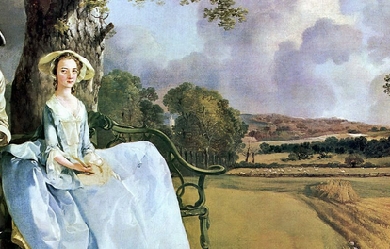
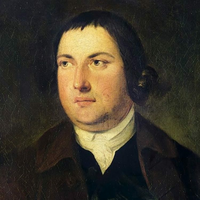
Charles Churchill (February, 1732– 4 November 1764), was an English poet and satirist. Early life Churchill was born in Vine Street, Westminster. His father, rector of Rainham, Essex, held the curacy and lectureship of St Johns, Westminster, from 1733, and Charles was educated at Westminster School, where he became a good classical scholar, and formed a close and lasting friendship with Robert Lloyd. He was admitted to St John’s College, Cambridge on 8 July 1748. Churchill contracted a marriage within the rules of the Fleet in his eighteenth year, and never lived at Cambridge; the young couple lived in his father’s house, and Churchill was afterwards sent to the north of England to prepare for holy orders. He became curate of South Cadbury, Somerset, and, on receiving priest’s orders (1756), began to act as his father’s curate at Rainham. Two years later the elder Churchill died, and the son was elected to succeed him in his curacy and lectureship. His emoluments amounted to less than £100 a year, and he increased his income by teaching in a girls’ school. His marriage proved unhappy, and he began to spend much of his time in dissipation in the society of Robert Lloyd. He was separated from his wife in 1761, and would have been imprisoned for debt but for the timely help of Lloyd’s father, who had been an usher and was now a master at Westminster. Career as Satirist Churchill had already done some work for the booksellers, and his friend Lloyd had had some success with a didactic poem, The Actor. Churchill’s knowledge of the theatre was now made use of in the Rosciad, which appeared in March 1761. This reckless and amusing satire described with the most disconcerting accuracy the faults of the various actors and actresses on the London stage; in a competition judged by Shakespeare and Jonson, Garrick is named the greatest English actor. Its immediate popularity was no doubt largely due to its personal character, but its vigour and raciness make it worth reading even now when the objects of Churchill’s wit are forgotten. The first impression was published anonymously, and in the Critical Review, conducted by Tobias Smollett, it was confidently asserted that the poem was the joint production of George Colman the Elder, Bonnell Thornton and Robert Lloyd. Churchill immediately published an Apology addressed to the Critical Reviewers, which, after developing the subject that it is only authors who prey on their own kind, repeats the fierce attack on the stage. Incidentally it contains an enthusiastic tribute to John Dryden, of whom Churchill was a devotee. In the Rosciad he had praised Mrs Pritchard, Mrs Cibber and Mrs Clive, but no leading London actor, with the exception of David Garrick, had escaped censure, and in the Apology Garrick was clearly threatened. He deprecated criticism by showing every possible civility to Churchill, who became a terror to the actors. Thomas Davies wrote to Garrick attributing his blundering in the part of Cymbeline “to my accidentally seeing Mr Churchill in the pit, it rendering me confused and unmindful of my business.” Churchill’s satire made him many enemies, and brought reprisals. In Night, an Epistle to Robert Lloyd (1761), he answered the attacks made on him, offering by way of defense the argument that any faults were better than hypocrisy. His scandalous conduct brought down the censure of the dean of Westminster, and in 1763 the protests of his parishioners led him to resign his offices, and he was free to wear his blue coat with metal buttons and much gold lace without remonstrance from the dean. The Rosciad had been refused by several publishers, and was finally published at Churchill’s own expense. He received a considerable sum from the sale, and paid his old creditors in full, besides making an allowance to his wife. Friendship with Wilkes He now became a close ally of John Wilkes, whom he regularly assisted with The North Briton weekly newspaper. His next poem, The Prophecy of Famine: A Scots Pastoral (1763), was founded on a paper written originally for that newspaper. This violent satire on Scottish influence fell in with the current hatred of Lord Bute, and the Scottish place-hunters were as much alarmed as the actors had been. When Wilkes was arrested he gave Churchill a timely hint to retire to the country for a time, the publisher, Kearsley, having stated that he received part of the profits from the paper. His Epistle to William Hogarth (1763) was in answer to the caricature of Wilkes made during the trial, in it Hogarth’s vanity and envy were attacked in an invective which Garrick quoted as shocking and barbarous. Hogarth retaliated by a caricature of Churchill as a bear in torn clerical bands hugging a pot of porter and a club made of lies and North Britons. The Duellist (1763) is a virulent satire on the most active opponents of Wilkes in the House of Lords, especially on Bishop Warburton. He attacked Dr Johnson among others in The Ghost as “Pomposo, insolent and loud, Vain idol of a scribbling crowd”. Other poems are The Conference (1763); The Author (1763), highly praised by Churchill’s contemporaries; Gotham (1764), a poem on the duties of a king, didactic rather than satiric in tone; The Candidate (1764), a satire on John Montagu, fourth earl of Sandwich, one of Wilkes’s bitterest enemies, whom he had already denounced for his treachery in The Duellist (Bk. iii.) as too infamous to have a friend; The Farewell (1764); The Times (1764); Independence, and an unfinished Journey. Death and Legacy In October 1764 he went to Boulogne to join Wilkes. There he was attacked by a fever of which he died on 4 November. He left his property to his two sons, and made Wilkes his literary executor with full powers. Wilkes did little. He wrote an epitaph for his friend and about half a dozen notes on his poems, and Andrew Kippis acknowledges some slight assistance from him in preparing his life of Churchill for the Biographia (1780). There is more than one instance of Churchill’s generosity to his friends. In 1763 he found his friend Robert Lloyd in prison for debt. He paid a guinea a week for his better maintenance in the Fleet, and raised a subscription to set him free. Lloyd fell ill on receipt of the news of Churchill’s death, and died shortly afterwards. Churchill’s sister Patty, who was engaged to Lloyd, did not long survive them. William Cowper was his schoolfellow, and left many kindly references to him. A partial collection of Churchill’s poems appeared in 1763. References Wikipedia—https://en.wikipedia.org/wiki/Charles_Churchill_(satirist)
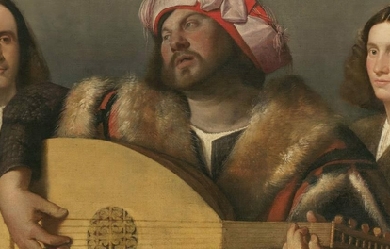
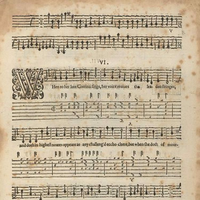
Thomas Campion (sometimes Campian) (12 February 1567 – 1 March 1620) was an English composer, poet, and physician. He wrote over a hundred lute songs, masques for dancing, and an authoritative technical treatise on music. Life Campion was born in London, the son of John Campion, a clerk of the Court of Chancery, and Lucy (née Searle– daughter of Laurence Searle, one of the queen’s serjeants-at-arms). Upon the death of Campion’s father in 1576, his mother married Augustine Steward, dying soon afterwards. His stepfather assumed charge of the boy and sent him, in 1581, to study at Peterhouse, Cambridge as a “gentleman pensioner”; he left the university after four years without taking a degree. He later entered Gray’s Inn to study law in 1586. However, he left in 1595 without having been called to the bar. On 10 February 1605, he received his medical degree from the University of Caen. Campion is thought to have lived in London, practising as a physician, until his death in March 1620– possibly of the plague. He was apparently unmarried and had no children. He was buried the same day at St Dunstan-in-the-West in Fleet Street. He was implicated in the murder of Sir Thomas Overbury, but was eventually exonerated, as it was found that he had unwittingly delivered the bribe that had procured Overbury’s death. Poetry and songs The body of his works is considerable, the earliest known being a group of five anonymous poems included in the “Songs of Divers Noblemen and Gentlemen,” appended to Newman’s edition of Sir Philip Sidney’s Astrophel and Stella, which appeared in 1591. In 1595, Poemata, a collection of Latin panegyrics, elegies and epigrams was published, winning him a considerable reputation. This was followed, in 1601, by a songbook, A Booke of Ayres, with words by himself and music composed by himself and Philip Rosseter. The following year he published his Observations in the Art of English Poesie, “against the vulgar and unartificial custom of riming,” in favour of rhymeless verse on the model of classical quantitative verse. Campion’s theories on poetry were demolished by Samuel Daniel in “Defence of Rhyme” (1603). In 1607, he wrote and published a masque for the occasion of the marriage of Lord Hayes, and, in 1613, issued a volume of Songs of Mourning: Bewailing the Untimely Death of Prince Henry, set to music by John Cooper (also known as Coperario). The same year he wrote and arranged three masques: The Lords’ Masque for the marriage of Princess Elizabeth; an entertainment for the amusement of Queen Anne at Caversham House; and a third for the marriage of the Earl of Somerset to the infamous Frances Howard, Countess of Essex. If, moreover, as appears quite likely, his Two Bookes of Ayres (both words and music written by himself) belongs also to this year, it was indeed his annus mirabilis. In 1615, he published a book on counterpoint, A New Way of Making Fowre Parts in Counterpoint By a Most Familiar and Infallible Rule, a technical treatise which was for many years the standard textbook on the subject. It was included, with annotations by Christopher Sympson, in Playford’s Brief Introduction to the Skill of Musick, and two editions appear to have been published by 1660. Some time in or after 1617 appeared his Third and Fourth Booke of Ayres. In 1618 appeared the airs that were sung and played at Brougham Castle on the occasion of the King’s entertainment there, the music by George Mason and John Earsden, while the words were almost certainly by Campion. In 1619, he published his Epigrammatum Libri II. Umbra Elegiarum liber unus, a reprint of his 1595 collection with considerable omissions, additions (in the form of another book of epigrams) and corrections. Legacy Campion made a nuncupative will on 1 March 1619/20 before 'divers credible witnesses’: a memorandum was made that he did 'not longe before his death say that he did give all that he had unto Mr Phillip Rosseter, and wished that his estate had bin farre more’, and Rosseter was sworn before Dr Edmund Pope to administer as principal legatee on 3 March 1619/20. While Campion had attained a considerable reputation in his own day, in the years that followed his death his works sank into complete oblivion. No doubt this was due to the nature of the media in which he mainly worked, the masque and the song-book. The masque was an amusement at any time too costly to be popular, and during the commonwealth period it was practically extinguished. The vogue of the song-books was even more ephemeral, and, as in the case of the masque, the Puritan ascendancy, with its distaste for all secular music, effectively put an end to the madrigal. Its loss involved that of many hundreds of dainty lyrics, including those of Campion, and it was due to the work of A. H. Bullen (see bibliography), who first published a collection of the poet’s works in 1889, that his genius was recognised and his place among the foremost rank of Elizabethan lyric poets restored. Campion set little store by his English lyrics; they were to him “the superfluous blossoms of his deeper studies,” but we may thank the fates that his ideas on rhymeless versification so little affected his work. His rhymeless experiments are certainly better conceived than many others, but they lack the spontaneous grace and freshness of his other poetry, while the whole scheme was, of course, unnatural. He must have possessed a very delicate musical ear, for not one of his songs is unmusical; moreover, his ability to compose both words and music gave rise to a metrical fluidity which is one of his most characteristic features. Rarely are his rhythms uniform, while they frequently shift from line to line. His range was very great both in feeling and expression, and whether he attempts an elaborate epithalamium or a simple country ditty, the result is always full of unstudied freshness and tuneful charm. In some of his sacred pieces, he is particularly successful, combining real poetry with genuine religious fervour. Some of Campion’s works could also be quite ribald– such as “Beauty, since you so much desire”. Early dictionary writers, such as Fétis, saw Campion as a theorist. It was much later on that people began to see him as a composer. He was the writer of a poem, Cherry Ripe, which is not the later famous poem of that title but has several similarities. In popular culture Repeated reference was made to Campion in an October 2010 episode of the BBC TV series, James May’s Man Lab (BBC2), where his works are used as the inspiration for a young man trying to serenade a female colleague. This segment was referenced in the second and third series of the programme as well. Occasional mention is made of Campion ("Campian") in the comic strip 9 Chickweed Lane (i.e., 5 April 2004), referencing historical context for playing the lute. References Wikipedia—https://en.wikipedia.org/wiki/Thomas_Campion
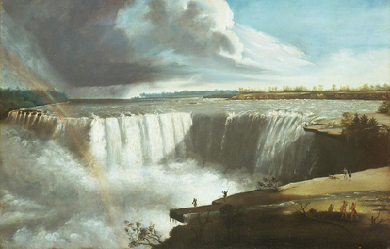
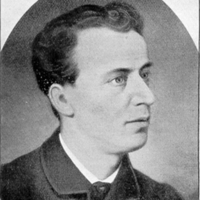
George Frederick Cameron (24 September 1854– 17 September 1885) was a Canadian poet, lawyer, and journalist, best known for the libretto for the operetta Leo, the Royal Cadet. He moved to Boston in April 1869. He graduated from the Boston University School of Law in 1877. He worked for the law firm Dean, Butler and Abbot of Boston from 1877 to 1882. He contributed poetry to Boston periodicals, including the Courier and the Transcript. In fall 1882 he enrolled in Queen’s College in Kingston, Ontario where he won a poetry prize in 1883 for “Adelphi.” He is sometimes considered one of the Confederation Poets.
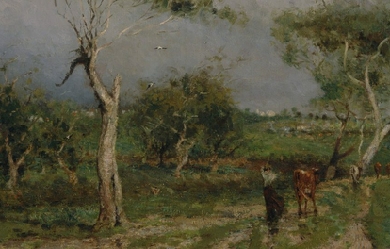
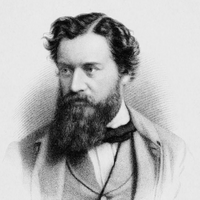
Charles Stuart Calverley (/ˈkɑːvərlɪ/; 22 December 1831– 17 February 1884) was an English poet and wit. He was the literary father of what has been called “the university school of humour”. Early life He was born at Martley, Worcestershire, and given the name Charles Stuart Blayds. In 1852, his father, the Rev. Henry Blayds, resumed the old family name of Calverley, which his grandfather had exchanged for Blayds in 1807. Charles went up to Balliol College, Oxford from Harrow School in 1850, and was soon known in Oxford as the most daring and high-spirited undergraduate of his time. He was a universal favourite, a delightful companion, a brilliant scholar and the playful enemy of all “dons.” In 1851 he won the Chancellor’s prize for Latin verse, but it is said that the entire exercise was written in an afternoon, when his friends had locked him into his rooms, refusing to let him out until he had finished what they were confident would prove the prize poem. A year later, to avoid the consequences of a college escapade (he had been expelled from Oxford), he too changed his name to Calverley and moved to Christ’s College, Cambridge. Here he was again successful in Latin verse, the only undergraduate to have won the Chancellor’s prize at both universities. In 1856 he took second place in the first class in the Classical Tripos. Later life He was elected fellow of Christ’s (1858), published Verses and Translations in 1862, and was called to the bar in 1865. Injuries sustained in a skating accident prevented him from following a professional career, and during the last years of his life he was an invalid. He died of Bright’s disease. Works * Nowadays he is best-known (at least in Cambridge, his adoptive home) as the author of the Ode to Tobacco which is to be found on a bronze plaque in Rose crescent, on the wall of what used to be Bacon’s the tobacconist. * His Translations into English and Latin appeared in 1866; his Theocritus translated into English Verse in 1869; Fly Leaves in 1872; and Literary Remains in 1885. * His Complete Works, with a biographical notice by Walter Joseph Sendall, a contemporary at Christ’s and his brother-in-law, appeared in 1901. * George W. E. Russell said of him: * He was a true poet; he was one of the most graceful scholars that Cambridge ever produced; and all his exuberant fun was based on a broad and strong foundation of Greek, Latin, and English literature. References Wikipedia—https://en.wikipedia.org/wiki/Charles_Stuart_Calverley
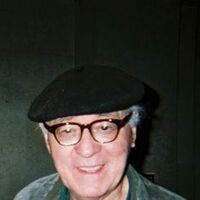
Cid (Sidney) Corman (June 29, 1924 – March 12, 2004) was an American poet, translator and editor, most notably of Origin, who was a key figure in the history of American poetry in the second half of the 20th century. Corman was born in Boston's Roxbury neighborhood and grew up nearby in the Dorchester neighborhood. His parents were both from the Ukraine. From an early age he was an avid reader and showed an aptitude for drawing and calligraphy. He attended Boston Latin School and in 1941 he entered Tufts University, where he achieved Phi Beta Kappa honours and wrote his first poems. He was excused from service in World War II for medical reasons and graduated in 1945. Corman studied for his Master's degree at the University of Michigan, where he won the Hopwood poetry award, but dropped out when two credits short of completion. After a brief stint at the University of North Carolina at Chapel Hill, he spent some time travelling around the United States, returning to Boston in 1948. Here he ran poetry events in public libraries and, with the help of his high-school friend Nat Hentoff, he started the country's first poetry radio program. In 1952, Corman wrote: "I initiated my weekly broadcasts, known as This Is Poetry, from WMEX (1510 kc.) in Boston. The program has been usually a fifteen-minute reading of modern verse on Saturday evenings at seven thirty; however, I have taken some liberties and have read from Moby Dick and from stories by Dylan Thomas, Robert Creeley, and Joyce."[3] This program featured readings by Robert Creeley, Stephen Spender, Theodore Roethke and many other Boston-based and visiting poets. He also spent some time at the Yaddo artists' retreat in Saratoga Springs. It was about this time that Corman changed his name from Sydney Corman to the simpler "Cid." As Corman indicated in conversation, this name change--similar to Whitman's assumption of Walt over Walter--signaled his beginnings as a poet for the common man. During this period, Corman was writing prolifically and published in excess of 500 poems in about 100 magazines by 1954. He considered this to be a kind of apprenticeship, and none of these poems were ever published in book form. Origin and Europe In 1951, Corman began Origin in response to the failure of a magazine that Creeley had planned. The magazine typically featured one writer per issue and ran, with breaks, until the mid 1980s. Poets featured included Robert Creeley, Robert Duncan, Larry Eigner, Denise Levertov, William Bronk, Theodore Enslin, Charles Olson, Louis Zukofsky, Gary Snyder, Lorine Niedecker, Wallace Stevens, William Carlos Williams, Paul Blackburn and Frank Samperi. The magazine also led to the establishment of Origin Press, which published books by a similar range of poets as well as by Corman himself and which remains currently active. In 1954, Corman won a Fulbright Fellowship grant (with an endorsement from Marianne Moore) and moved to France, where he studied for a time at the Sorbonne. He then moved to Italy to teach English in a small town called Matera. By this time, Corman had published a number of small books, but his Italian experiences were to provide the materials for his first major work, Sun Rock Man (1962). He also experimented with oral poetry, recording improvised poems on tape. These tapes were later to influence the talk-poems of David Antin, one of the key developments in the emergence of performance poetry. At this time he produced the first English translations of Paul Celan, even though he didn't have the poet's approval. Japan In 1958, Corman got a teaching job in Kyoto through the auspices of Will Petersen or, according to one account, poet Gary Snyder. Here he continued to write and to run Origin and in 1959 he published Snyder's first book, Riprap. He remained in Japan until 1960, when he returned to the States for two years. Back in Japan he married Konishi Shizumi, a Japanese TV news editor. Corman began to translate Japanese poetry, particularly work by Bashō and Kusano Shimpei. The Cormans spent the years 1970 to 1982 in Boston, where they unsuccessfully tried to establish a number of small businesses. They returned to Kyoto, where they remained, running CC's Coffee Shop in Kyoto, "offering poetry and western-style patisserie". Later work Corman has been associated with the Beats, Black Mountain poets and Objectivists, mainly through his championing as an editor, publisher and critic. However, he remained independent of all groups and fashions throughout his career. Michael Carlson, who contributed to Origins and corresponded with Corman starting in the 1980s, described Corman's correspondence this way: "In the days before email his words came by return post, aerogrammes densely typed to take advantage of every inch of space, or postcards printed in his fine hand. They were encouraging, gossipy, and always challenging; he expected everyone to match his commitment to poetry as a way of life. But they also digressed into other shared enthusiasms: in my case his love of baseball and sumo wrestling, and often into the difficulties of making a living in expensive Japan." He was a prolific poet until his final illness, publishing more than 100 books and pamphlets. In 1990, he published the first two volumes of his selected poems, OF, running to some 1500 poems. Volume 3, with a further 750 poems appeared in 1998 and two further volumes are planned. Several collections of wide-ranging essays have been published. His translations (or co-translations) include Bashō's Back Roads to Far Towns, Things by Francis Ponge, poems by Paul Celan and collections of haiku. Cid Corman did not speak, read or write Japanese, even though his co-translation with Susumu Kamaike of Bashō's Oku No Hosomichi (see above) is considered to be one of the most accurate in tone in the English language. Corman also felt himself able to translate from classical Chinese without so much as a minimal understanding of the language. One of Corman's last appearances in the United States was at the 2003 centennial symposium and celebration in southern Wisconsin that honored his friend and fellow poet, Lorine Niedecker. At the time, Corman spoke warmly about his connection to the Fort Atkinson, Wisconsin, poet (playing the only known audio tape of Niedecker reading from her works). Niedecker had died in 1970, shortly after Corman had visited her. As he told friends and admirers during the 2003 gathering, Corman had not returned to the Black Hawk Island haunts of Niedecker since that first (and only) visit with Niedecker. He died in Kyoto, Japan on March 12, 2004 after being hospitalized for a cardiac condition since January 2004. References Wikipedia - http://en.wikipedia.org/wiki/Cid_Corman

Utterly undone, I picked up the pieces... Reborn, I started afresh... Newly made, I became greater than I had ever imagined. I'm 23 and every day, I learn something new about love, life, and how to do it right. Poetry is a vehicle for thoughts, passion, ideas, and so much more. Tell me what you think and don't hold back--I wouldn't be posting it here if I weren't seeking an honest response. I believe in community sharing and that families sprout up in the least expected places. As you read, I hope you feel at home and I happily and gratefully extend the familial hand of fellowship to you.
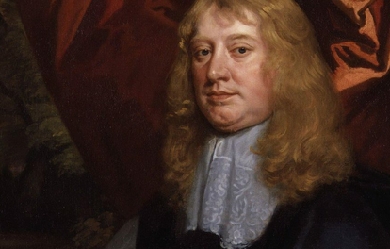
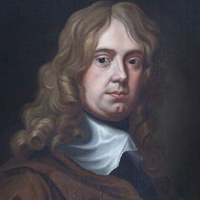
Abraham Cowley (1618– 28 July 1667) was an English poet born in the City of London late in 1618. He was one of the leading English poets of the 17th century, with 14 printings of his Works published between 1668 and 1721. Early life and career His father, a wealthy citizen, who died shortly before his birth, was a stationer. His mother was wholly given to works of devotion, but it happened that there lay in her parlour a copy of The Faerie Queene. This became the favourite reading of her son, and he had read it twice before he was sent to school. As early as 1628, that is, in his tenth year, he composed his Tragicall History of Piramus and Thisbe, an epic romance written in a six-line stanza, a style of his own invention. It is not too much to say that this work is the most astonishing feat of imaginative precocity on record; it is marked by no great faults of immaturity, and possesses constructive merits of a very high order. Two years later the child wrote another and still more ambitious poem, Constantia and Philetus, being sent about the same time to Westminster School. Here he displayed extraordinary mental precocity and versatility, and wrote in his thirteenth year the Elegy on the Death of Dudley, Lord Carlton. These three poems of considerable size, and some smaller ones, were collected in 1633, and published in a volume entitled Poetical Blossoms, dedicated to the head master of the school, and prefaced by many laudatory verses by schoolfellows. The author at once became famous, although he had not, even yet, completed his fifteenth year. His next composition was a pastoral comedy, entitled Love’s Riddle, a marvelous production for a boy of sixteen, airy, correct and harmonious in language, and rapid in movement. The style is not without resemblance to that of Randolph, whose earliest works, however, were at that time only just printed. In 1637 Cowley was elected into Trinity College, Cambridge, where he betook himself with enthusiasm to the study of all kinds of learning, and early distinguished himself as a ripe scholar. Portraits of Cowley, attributed to William Faithorne and Stephen Slaughter, are in Trinity College’s collection. It was about this time that he composed his scriptural epic on the history of King David, one book of which still exists in the Latin original, the rest being superseded in favour of an English version in four books, called the Davideis, which were published after his death. The epic deals with the adventures of King David from his boyhood to the smiting of Amalek by Saul, where it abruptly closes. In 1638 Love’s Riddle and a Latin comedy, the Naufragium Joculare, were printed, and in 1641 the passage of Prince Charles through Cambridge gave occasion to the production of another dramatic work, The Guardian, which was acted before the royal visitor with much success. During the civil war this play was privately performed at Dublin, but it was not printed till 1650. It is bright and amusing, in the style common to the “sons” of Ben Jonson, the university wits who wrote more for the closet than the public stage. Royalist in exile The learned quiet of the young poet’s life was broken up by the Civil War; he warmly espoused the royalist side. He became a fellow of Trinity College, Cambridge, but was ejected by the Parliamentarians in 1643. He made his way to Oxford, where he enjoyed the friendship of Lord Falkland, and was tossed, in the tumult of affairs, into the personal confidence of the royal family itself. After the battle of Marston Moor he followed the queen to Paris, and the exile so commenced lasted twelve years. This period was spent almost entirely in the royal service, “bearing a share in the distresses of the royal family, or labouring in their affairs. To this purpose he performed several dangerous journeys into Jersey, Scotland, Flanders, the Netherlands, or wherever else the king’s troubles required his attendance. But the chief testimony of his fidelity was the laborious service he underwent in maintaining the constant correspondence between the late king and the queen his wife. In that weighty trust he behaved himself with indefatigable integrity and unsuspected secrecy; for he ciphered and deciphered with his own hand the greatest part of all the letters that passed between their majesties, and managed a vast intelligence in many other parts, which for some years together took up all his days, and two or three nights every week.” In spite of these labours he did not refrain from literary industry. During his exile he met with the works of Pindar, and determined to reproduce their lofty lyric passion in English. However, Cowley misunderstood Pindar’s metrical practice and therefore his reproduction of the Pindaric Ode form in English does not accurately reflect Pindar’s poetics. But despite this problem, Cowley’s use of iambic lines of irregular length, pattern, and rhyme scheme was very influential and is still known as English “Pindarick” Ode, or Irregular Ode. One of the most famous odes written after Cowley in the Pindaric tradition is Wordsworth’s “Intimations of Immortality.” During this same time, Cowley occupied himself in writing a history of the Civil War (which did not get published in full until 1973). In the preface to his 1656 Poems, Cowley mentioned that he had completed three books of an epic poem on the Civil War, but had left it unfinished after the First Battle of Newbury when the Royalist cause began to lose significant ground. In the preface Cowley indicated that he had destroyed all copies of the poem, but this was not precisely the truth. In 1697, twelve years after Cowley’s death, a shortened version of the first book of the poem, called A Poem on the Late Civil War was published. It was assumed that the rest of the poem had indeed been destroyed or lost until the mid-20th century when scholar Allan Pritchard discovered the first of two extant manuscript copies of the whole poem among the Cowper family papers. Thus, the three completed books of Cowley’s great (albeit unfinished) English epic, The Civill Warre (otherwise spelled “The Civil War”), was finally published in full for the first time in 1973. In 1647 a collection of his love verses, entitled The Mistress, was published, and in the next year a volume of wretched satires, The Four Ages of England, was brought out under his name, with the composition of which he had nothing to do. In spite of the troubles of the times, so fatal to poetic fame, his reputation steadily increased, and when, on his return to England in 1656, he published a volume of his collected poetical works, he found himself without a rival in public esteem. This volume included the later works already mentioned, the Pindarique Odes, the Davideis, the Mistress and some Miscellanies. Among the latter are to be found Cowley’s most vital pieces. This section of his works opens with the famous aspiration: “What shall I do to be for ever known, And make the coming age my own?” It contains elegies on Wotton, Vandyck, Falkland, William Hervey and Crashaw, the last two being among Cowley’s finest poems, brilliant, sonorous and original; the amusing ballad of The Chronicle, giving a fictitious catalogue of his supposed amours; various gnomic pieces; and some charming paraphrases from Anacreon. The Pindarique Odes contain weighty Lines and passages, buried in irregular and inharmonious masses of moral verbiage. Not more than one or two are good throughout, but a full posy of beauties may easily be culled from them. The long cadences of the Alexandrines with which most of the strophes close, continued to echo in English poetry from Dryden down to Gray, but the Odes themselves, which were found to be obscure by the poet’s contemporaries, immediately fell into disesteem. The Mistress was the most popular poetic reading of the age, and is now the least read of all Cowley’s works. It was the last and most violent expression of the amatory affectation of the 17th century, an affectation which had been endurable in Donne and other early writers because it had been the vehicle of sincere emotion, but was unendurable in Cowley because in him it represented nothing but a perfunctory exercise, a mere exhibition of literary calisthenics. He appears to have been of a cold, or at least of a timid, disposition; in the face of these elaborately erotic volumes, we are told that to the end of his days he never summoned up courage to speak of love to a single woman in real life. The “Leonora” of The Chronicle is said to have been the only woman he ever loved, and she married the brother of his biographer, Sprat. Return to England Soon after his return to England he was seized in mistake for another person, and only obtained his liberty on a bail of £1000. In 1658 he revised and altered his play of The Guardian, and prepared it for the press under the title of The Cutter of Coleman Street, but it did not appear until 1661. Late in 1658 Oliver Cromwell died, and Cowley took advantage of the confusion of affairs to escape to Paris, where he remained until the Restoration brought him back in Charles’s train. He published in 1663 Verses upon several occasions, in which The Complaint is included. He is also known for having provided the earliest reference to coca in English literature, in a poem called “A legend of coca” in his 1662 collection of poems Six Books of Plants. Cowley obtained permission to retire into the country; and through his friend, Lord St Albans, he obtained a property near Chertsey, where, devoting himself to botany and books, he lived in comparative solitude until his death. He took a practical interest in experimental science, and he was one of those advocating the foundation of an academy for the protection of scientific enterprise. Cowley’s pamphlet on The Advancement of Experimental Philosophy, 1661, immediately preceded the foundation of the Royal Society; to which Cowley, in March 1667, at the suggestion of John Evelyn, addressed an ode. He died in the Porch House, in Chertsey, in consequence of having caught a cold while superintending his farm-labourers in the meadows late on a summer evening. On 3 August, Cowley was buried in Westminster Abbey beside the ashes of Chaucer and Spenser, where in 1675 the duke of Buckingham erected a monument to his memory. His Poemata Latina, including six books “Plantarum,” were printed in 1668. The poetry of Cowley rapidly fell into neglect. The works of Cowley were collected in 1668, when Thomas Sprat brought out an edition in folio, to which he prefixed a life of the poet. There were many reprints of this collection, which formed the standard edition till 1881, when it was superseded by Alexander Balloch Grosart’s privately printed edition in two volumes, for the Chertsey Worthies library. The Essays have frequently been revived. A Satire Against Separatists, printed in 1675, has been variously attributed to Cowley and to Peter Hausted. References Wikipedia—https://en.wikipedia.org/wiki/Abraham_Cowley

Maryann Corbett (née Zillotti, Washington, D.C.) is an American poet, medievalist, and linguist.She grew up in northern Virginia. She did her undergraduate work at the College of William and Mary in Williamsburg, Virginia, and graduated with a doctorate in English from the University of Minnesota.Her work has appeared in Southwest Review, Barrow Street, Rattle, River Styx, Atlanta Review, The Evansville Review, Measure, Literary Imagination, The Dark Horse, Italian Americana, Mezzo Cammin, Linebreak, Subtropics, Verse Daily, American Life in Poetry, The Poetry Foundation, The Writer’s Almanac, and many other venues in print and online, as well as an assortment of anthologies, including The Best American Poetry 2018. She has been a several-time Pushcart and Best of the Net nominee; a finalist for the 2009 Morton Marr Prize, the 2010 Best of the Net anthology, and the 2011 and 2016 Able Muse Book Prize; and a winner of the Lyric Memorial Award, the Willis Barnstone Translation Prize, and the Richard Wilbur Award. Her third book, Mid Evil, is the Wilbur Award winner and has been published by the University of Evansville Press.She has worked as a writing teacher and indexer for the Minnesota Legislature. She lives in St. Paul, Minnesota.




